Ireland’s Stunning Western Coast
The Wild Atlantic Way (WAW) is a 1,600 mile (2,600 km) scenic route that follows the length of Ireland’s western coast. While Ireland is a relatively small island, its coastline is serpentine and full of peninsulas that make the WAW one of the longest defined coastal routes in the world. We flew to Ireland in April 2022 after our Schengen visa ran out in Spain, and we spent about a month cycling the Wild Atlantic Way from Kinsale to Derry.
Route
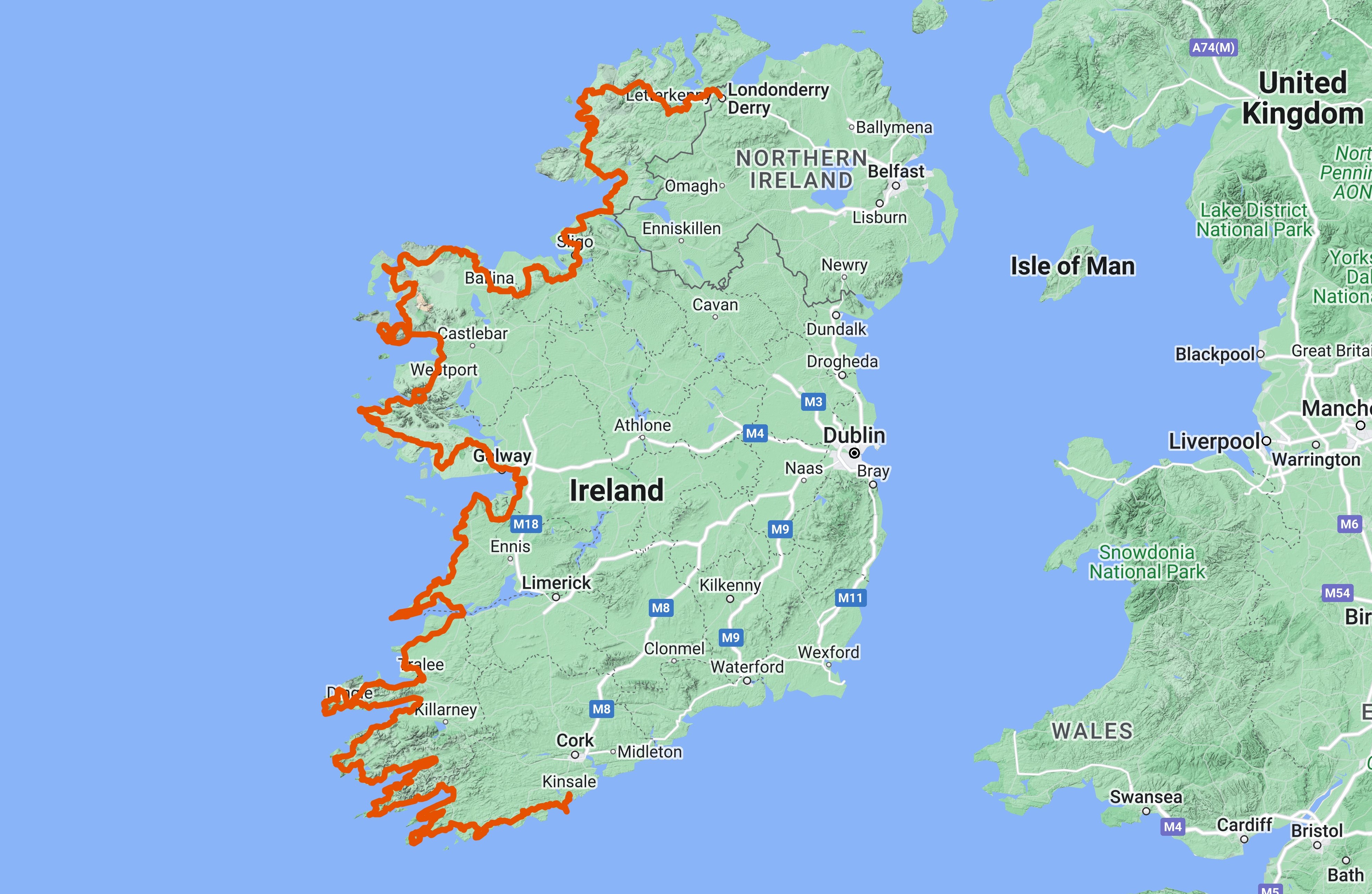
Download the GPX track of our ride on the Wild Atlantic Way.
Kinsale and the Beginning of the Route
We arrived at the start of the WAW after cycling from Dublin, through the Wicklow Mountains, and on to Kinsale. Kinsale was the first of many colorful seaside towns to take in along the route. From Kinsale, we rode towards the southwestern peninsulas of counties Cork and Kerry, which are some of the most famous parts of the route.
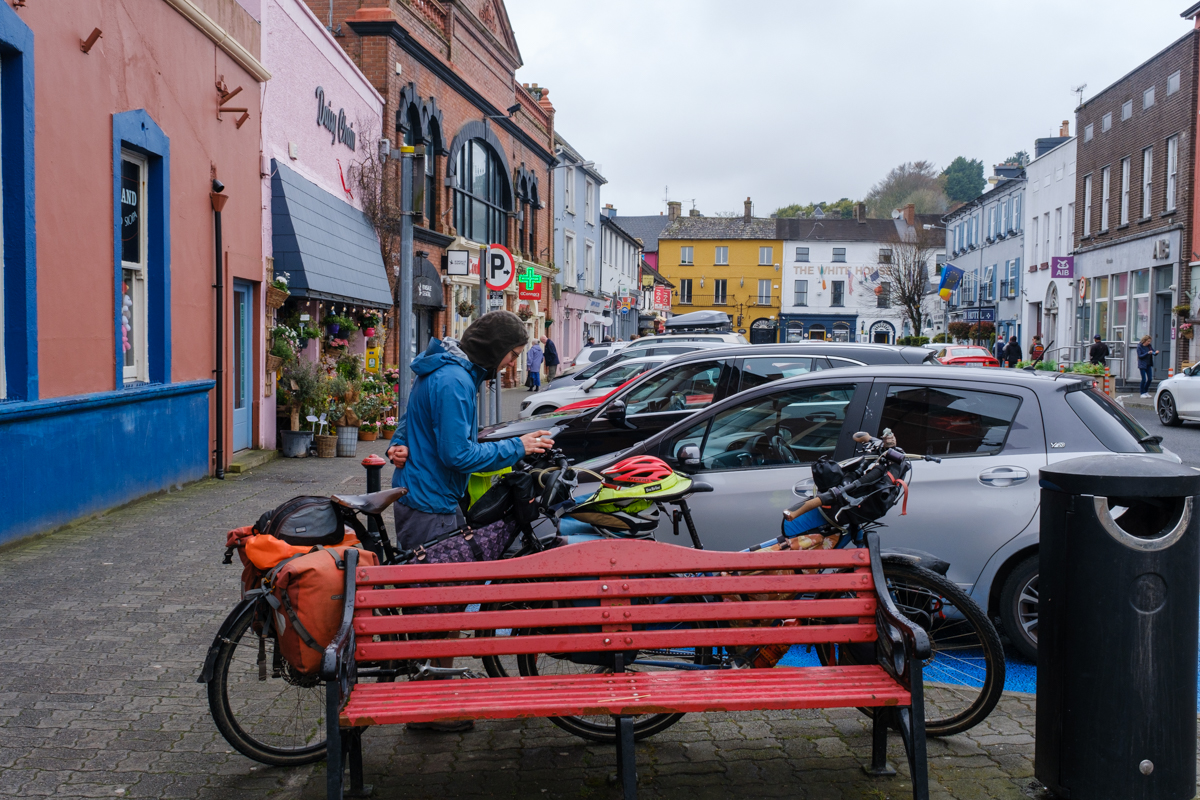
Southwestern Peninsulas
We had been riding through lots of farmland in Ireland, and we were excited to get to the less developed coastline. There were often sheep fields right up to the very ends of the peninsulas, where it was too rocky for grazing. The first major peninsula we rode was Mizen Head, where we didn’t go all the way out to the end unfortunately, because we didn’t realize that was the coolest part.
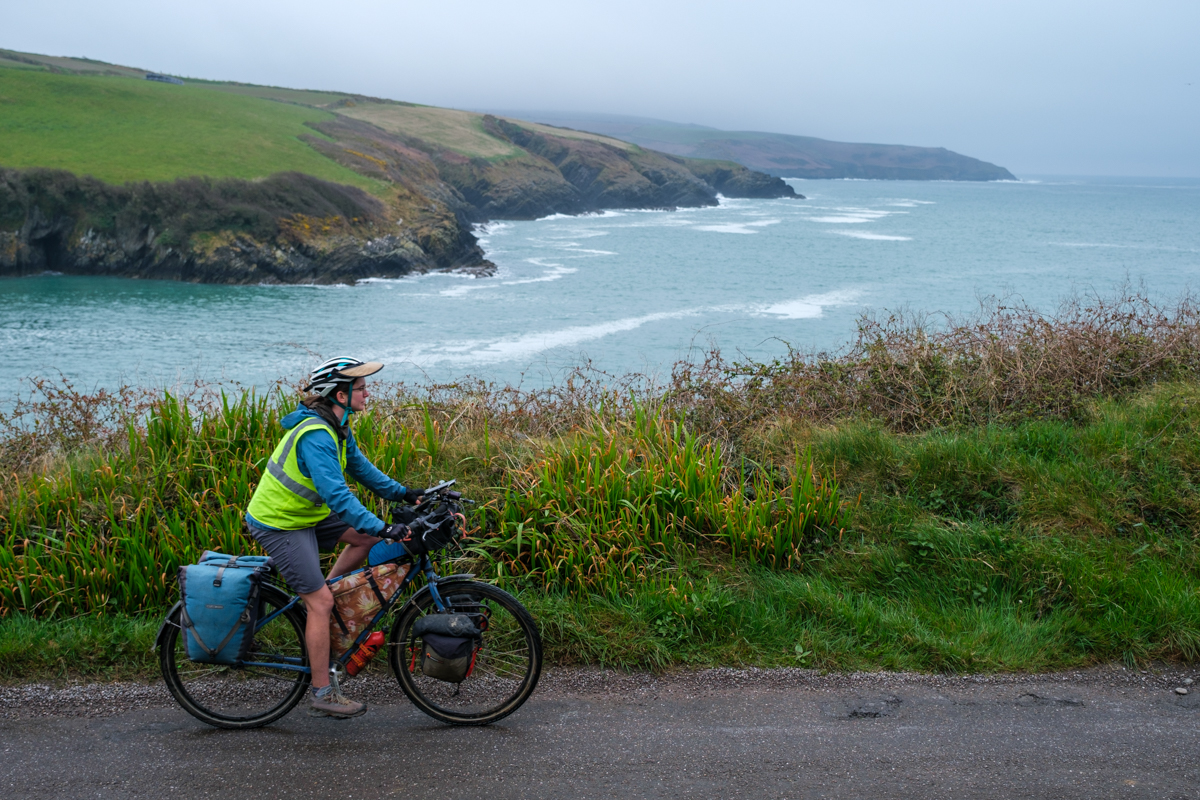
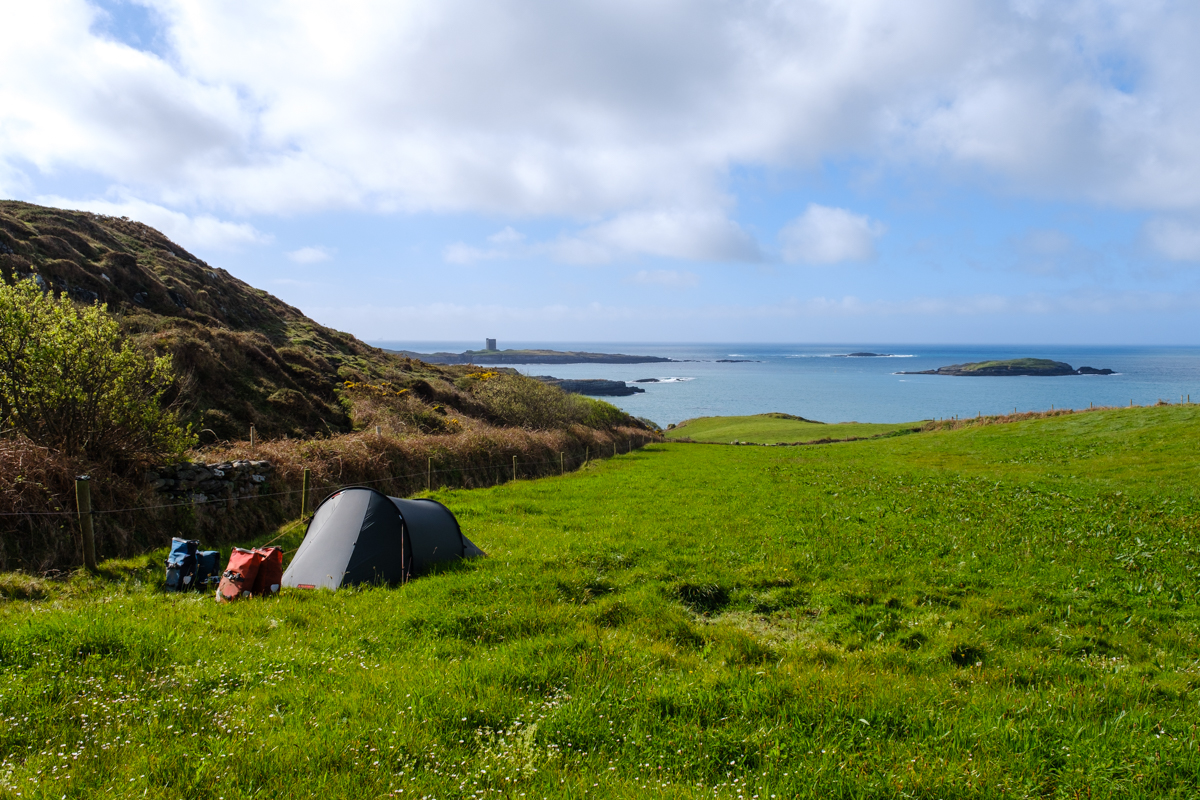
Sheep’s Head Peninsula
Sheep’s Head is a skinny peninsula that is packed with beautiful scenery despite its small size. There were quite a few expensive vacation homes scattered around, as was the case with most of the coast of Ireland, and we were stopped one evening by a local who told us that he was “weary of wild campers.” He didn’t really elaborate on why, but after talking with us for a while he wound up giving us directions to a nice area to camp.
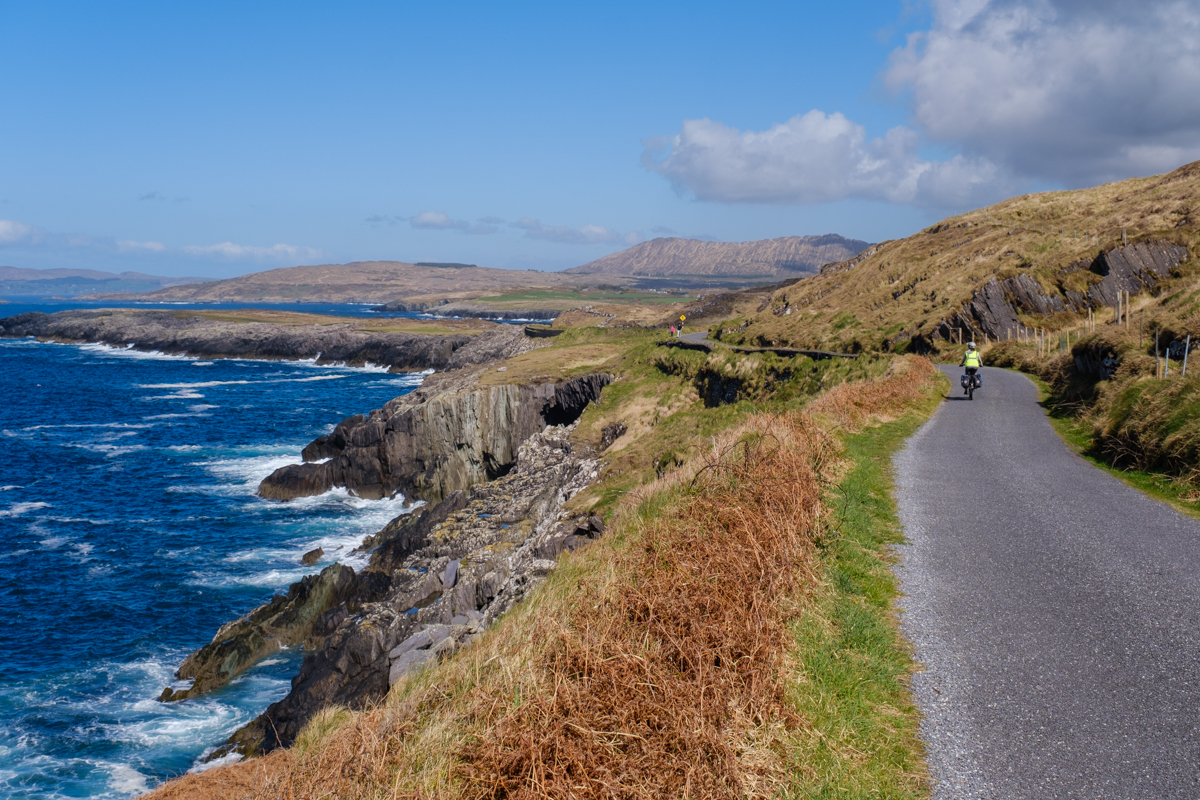
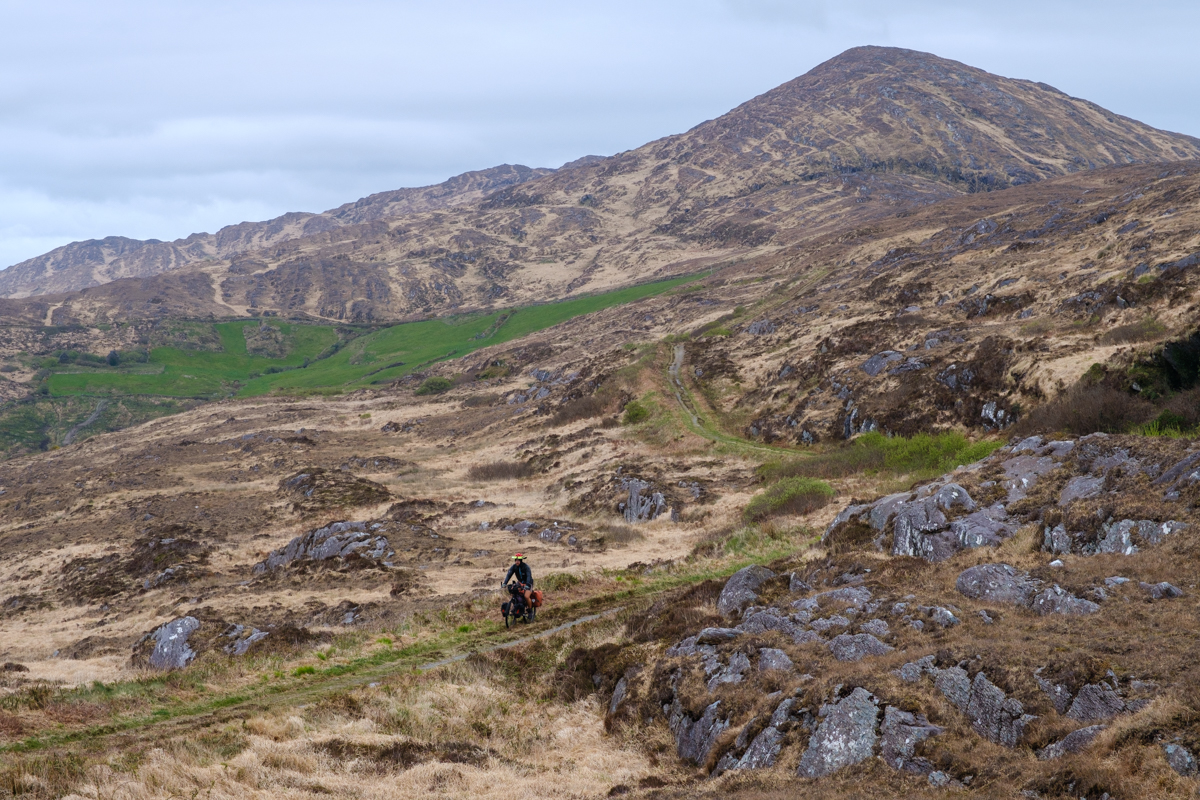
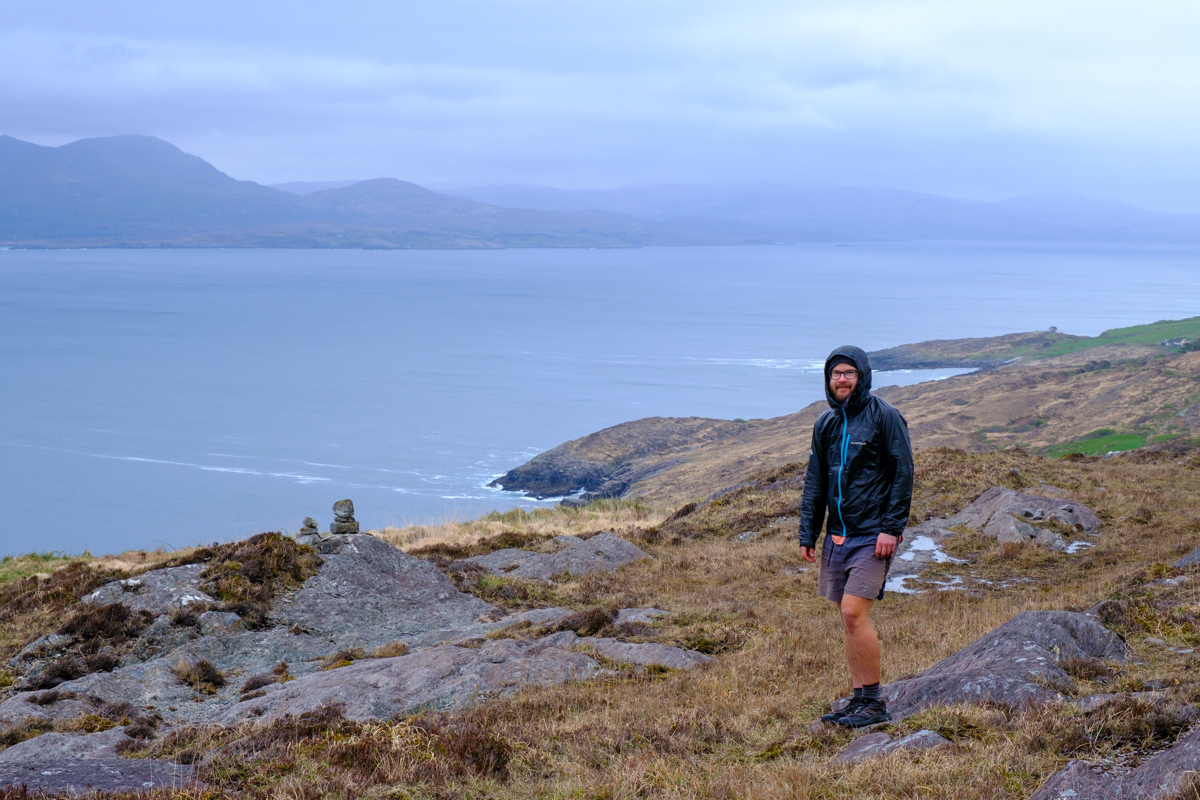
Beara Peninsula
We had heard great things about the Beara Peninsula, and it did not disappoint. The weather was on our side and we had wonderful views of the mountains, and there were some really fun rollercoaster sections that wound along the jagged coast.
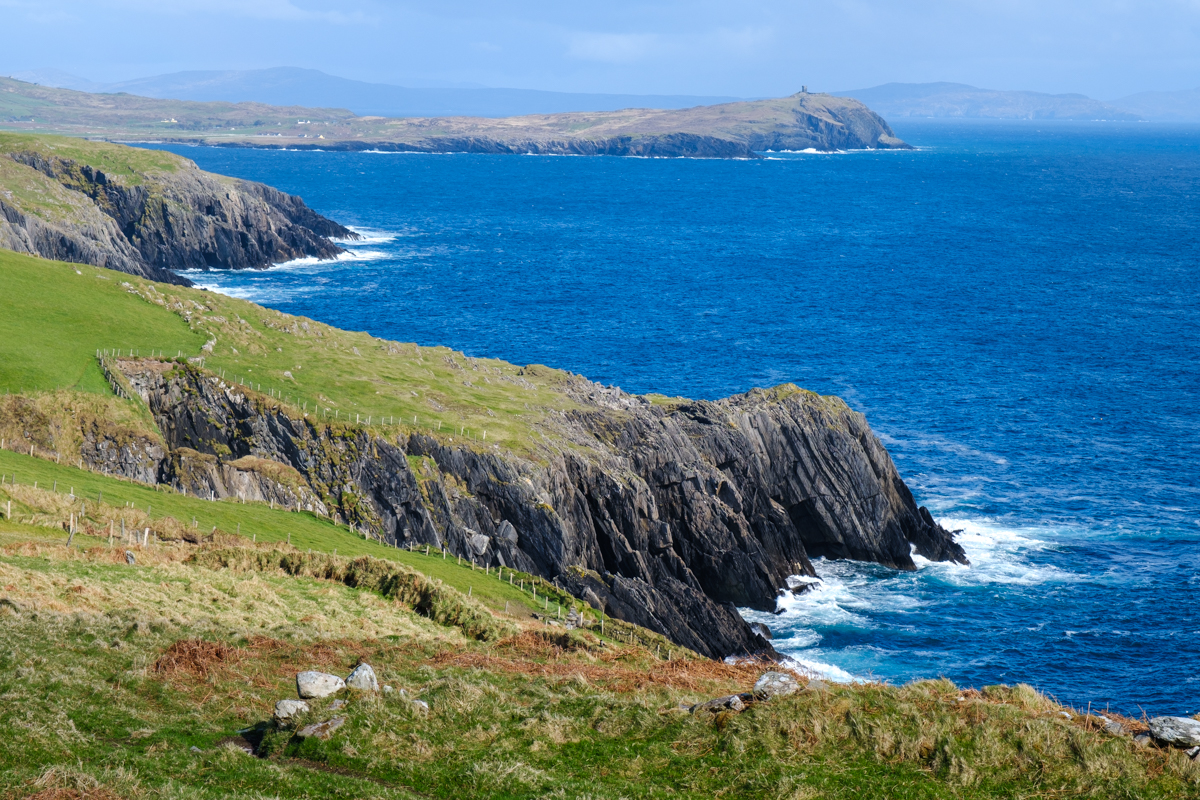
Ring of Kerry
The Ring of Kerry is one of the most touristy areas of Ireland, and we were a little bit worried about the traffic since the route was on the main highway. It definitely wasn’t ideal since the shoulder was non-existent, but drivers were pretty courteous and it wasn’t as bad as we thought it would be. Wild camping was especially difficult in this area because everything is privately owned and fenced off. One night we had to camp right in a parking area because it was dark and there was nowhere else to go.
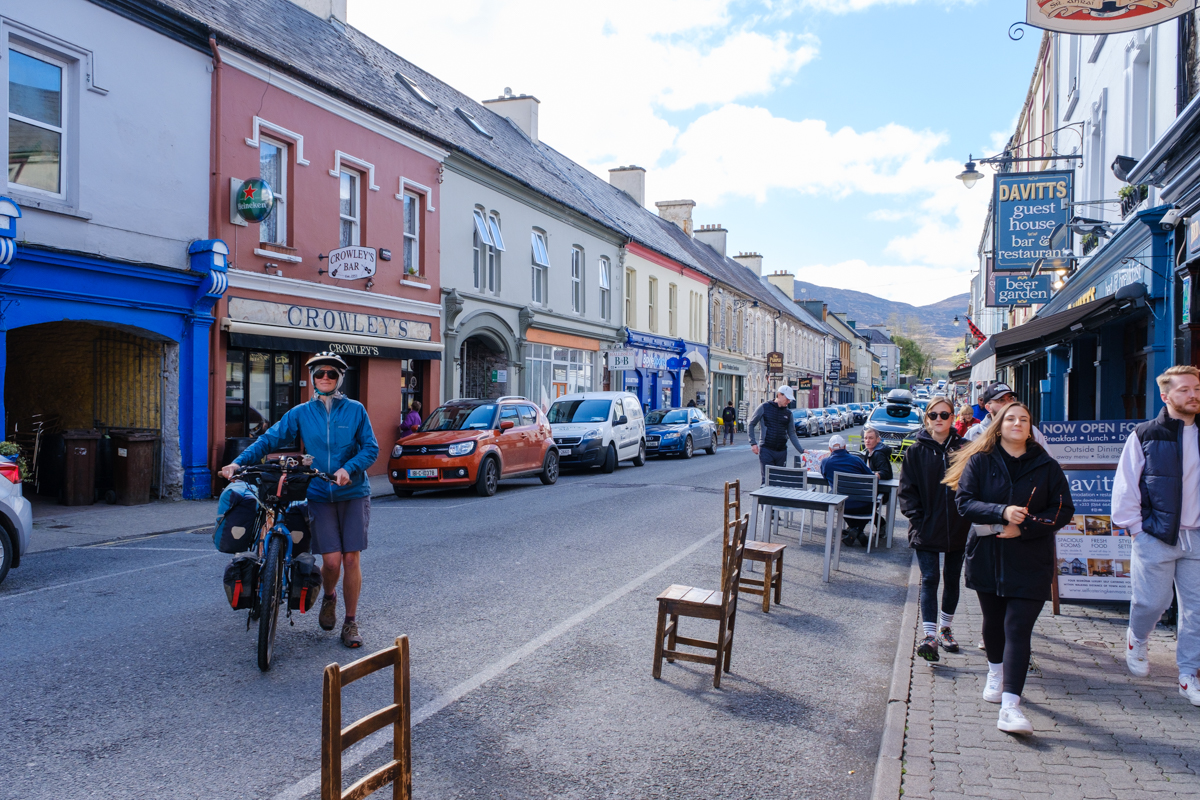
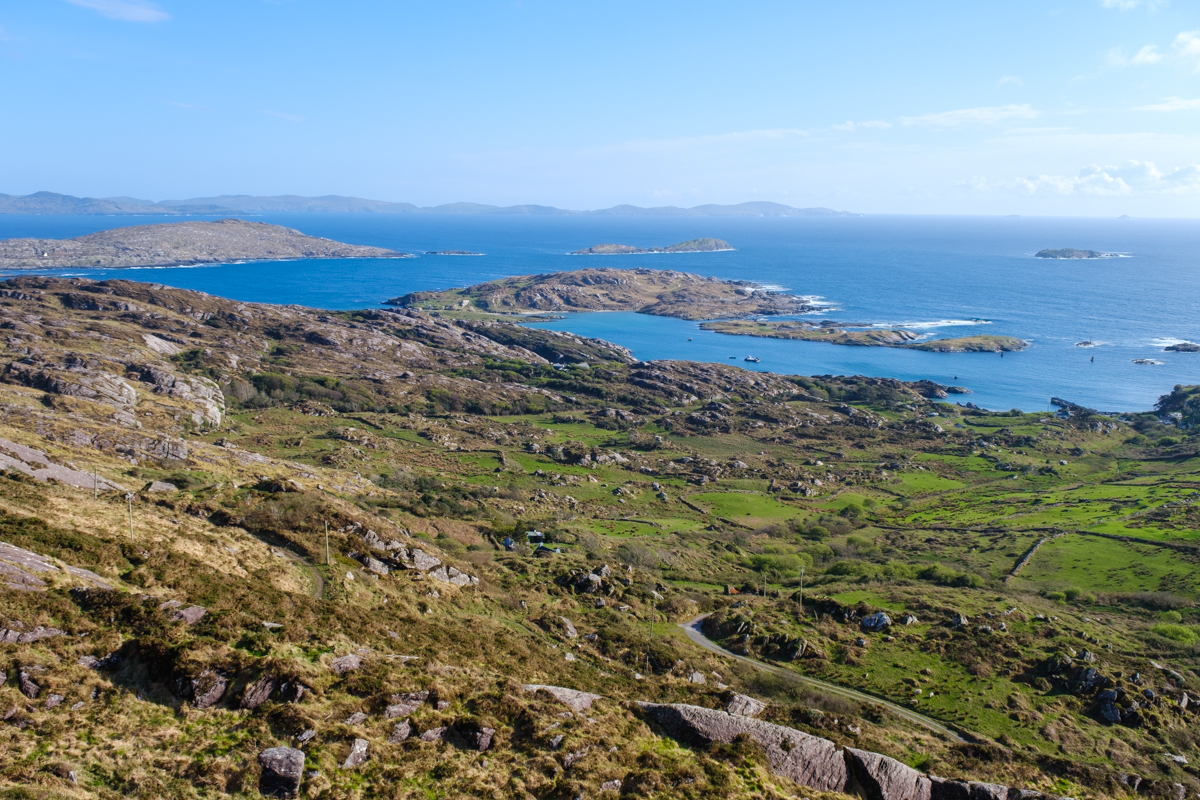
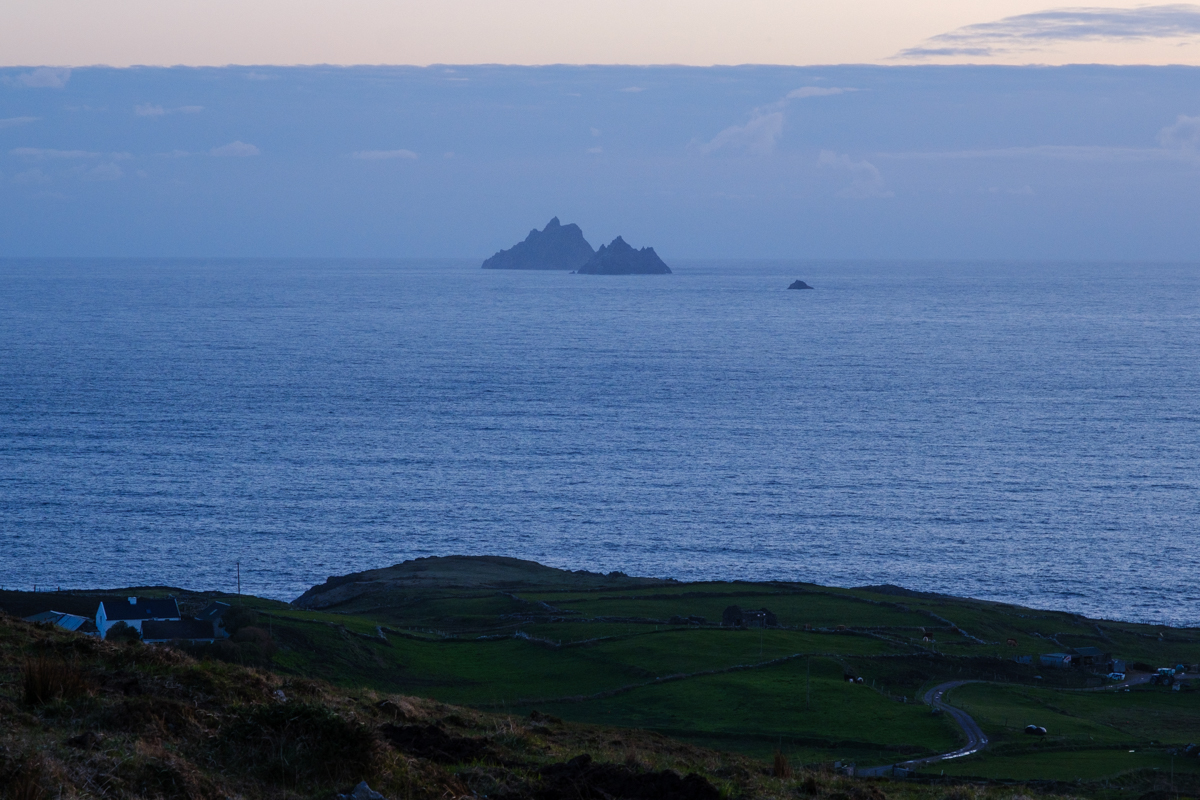
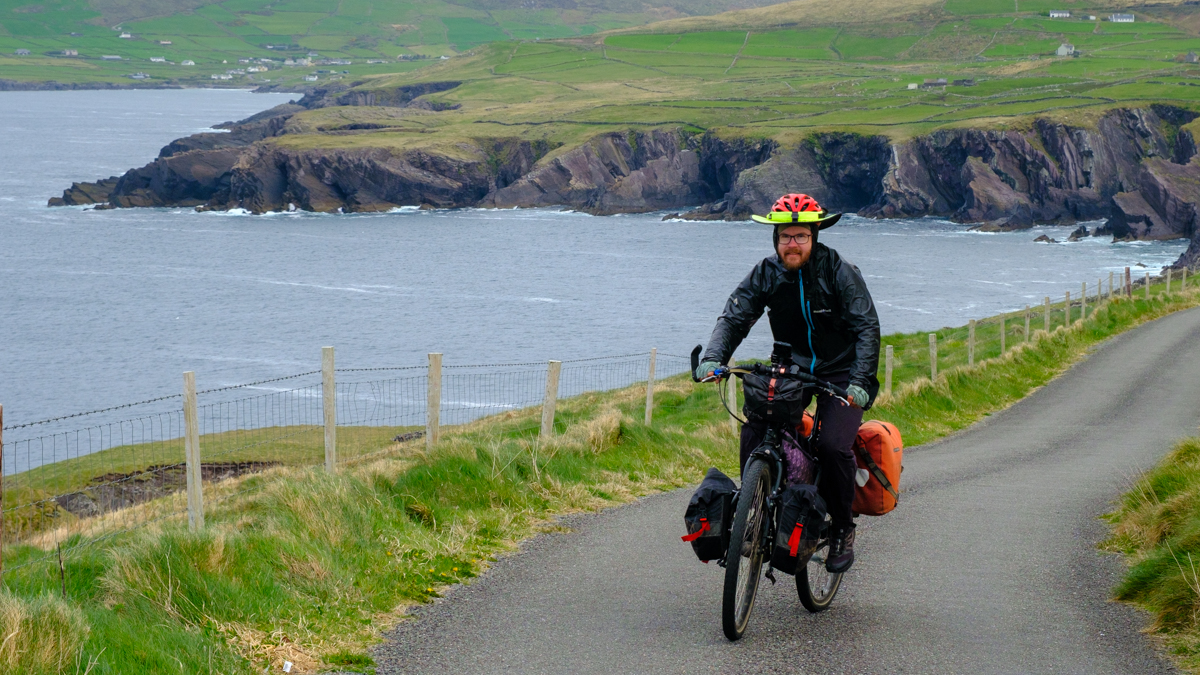
Dingle Peninsula
Dingle was probably our favorite of the peninsulas in the southwest. We rode to the very end of the peninsula at sunset and there were hardly any cars at that time, so we had the whole place to ourselves. We also had our favorite campsite of the trip on Dingle, where our tent looked over tall sea cliffs and we could watch the waves crash into the rocks below.
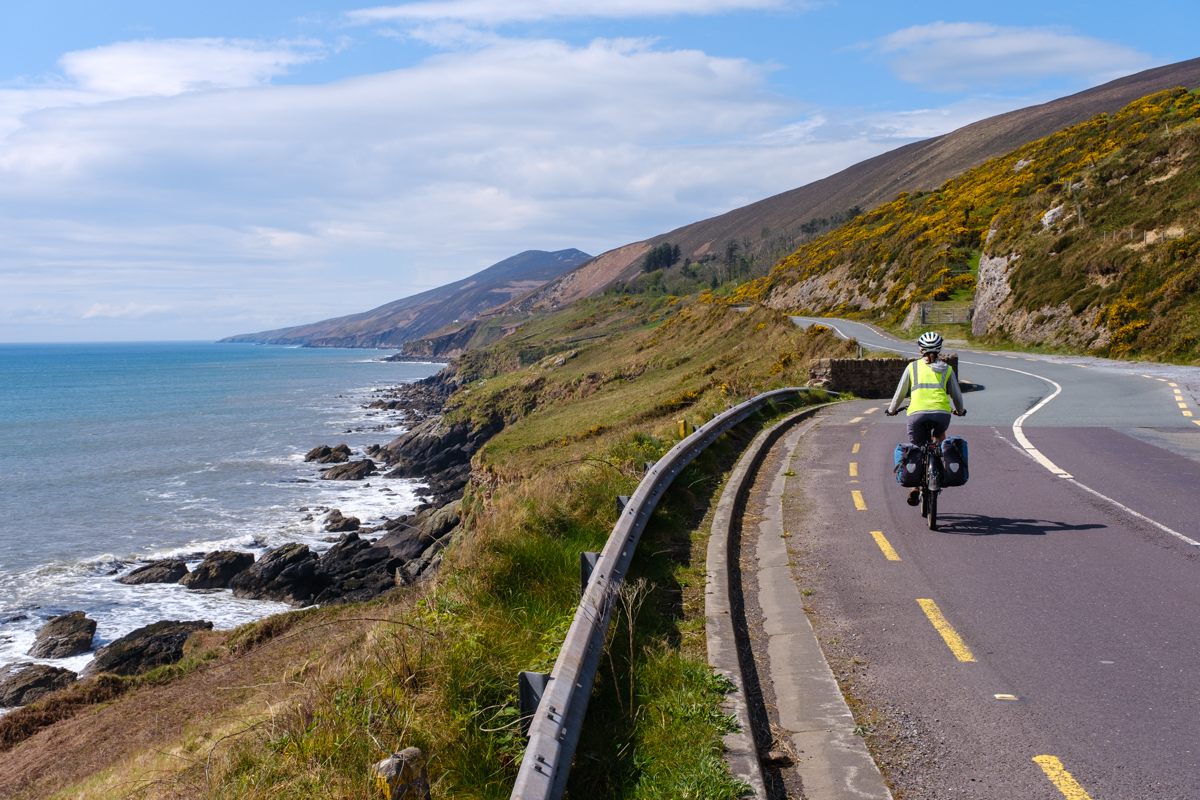
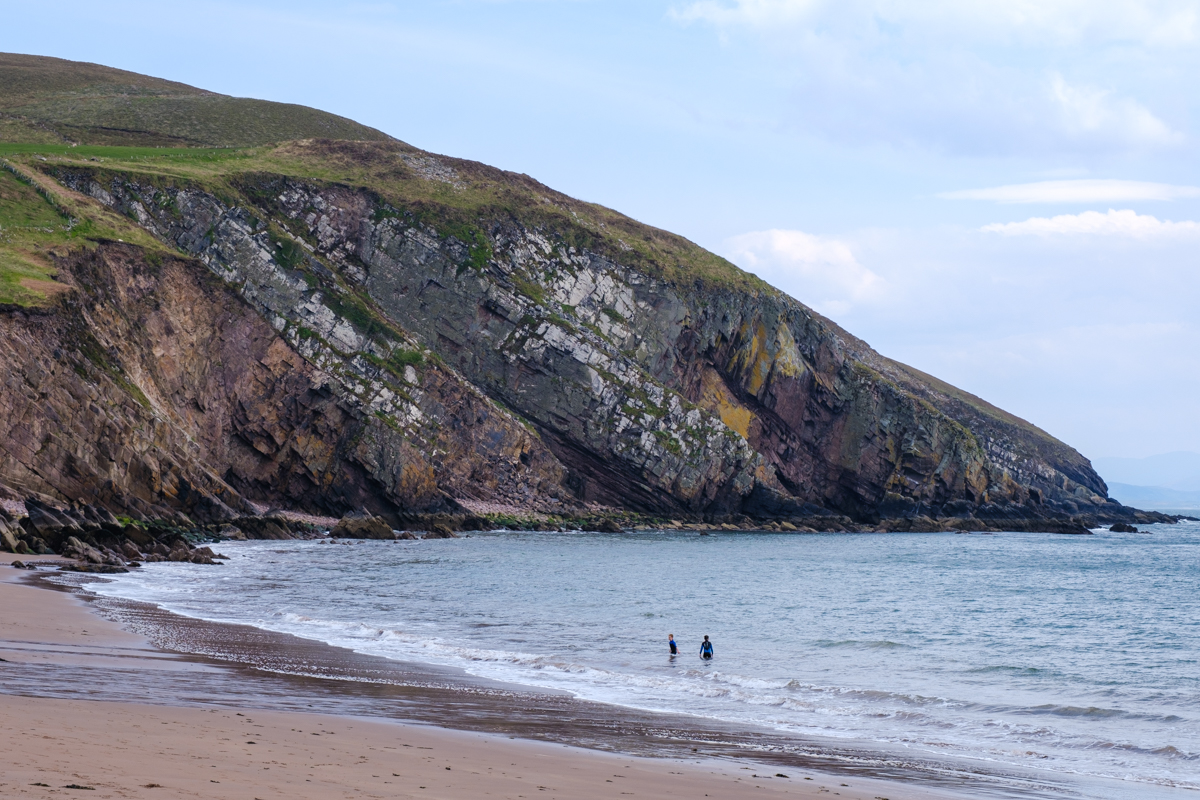
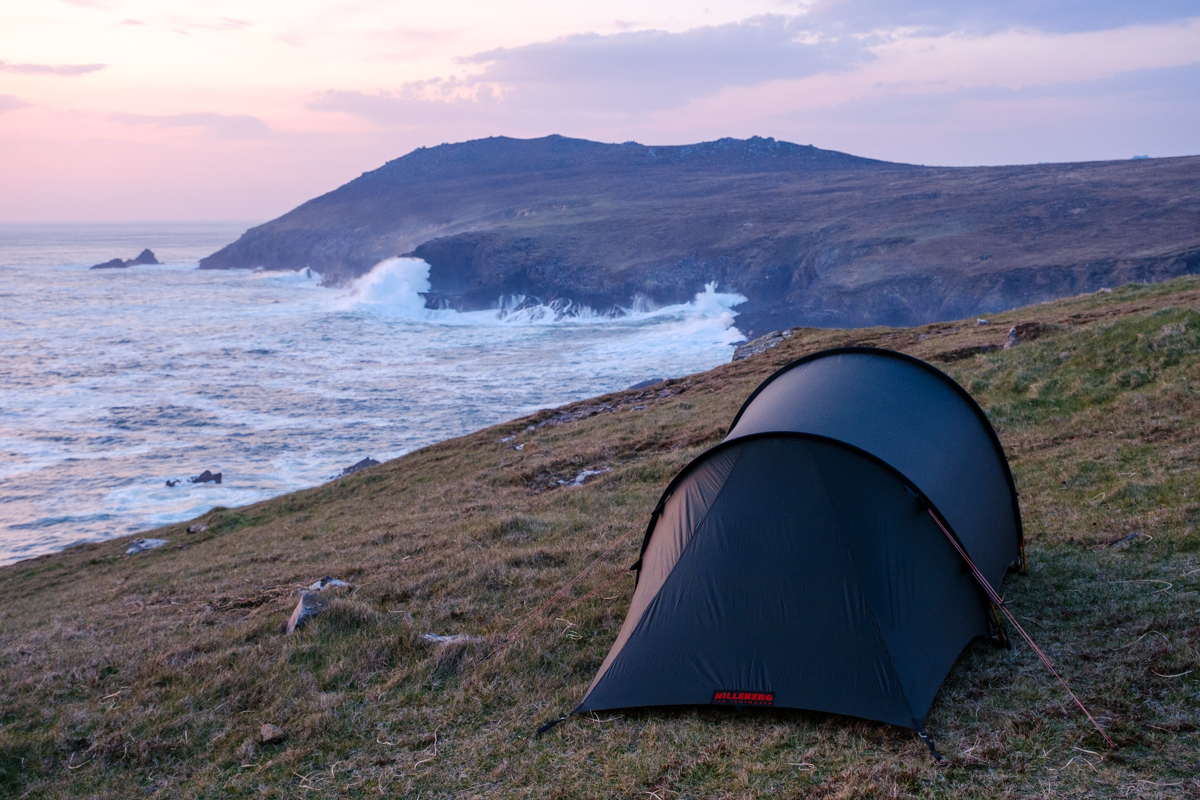
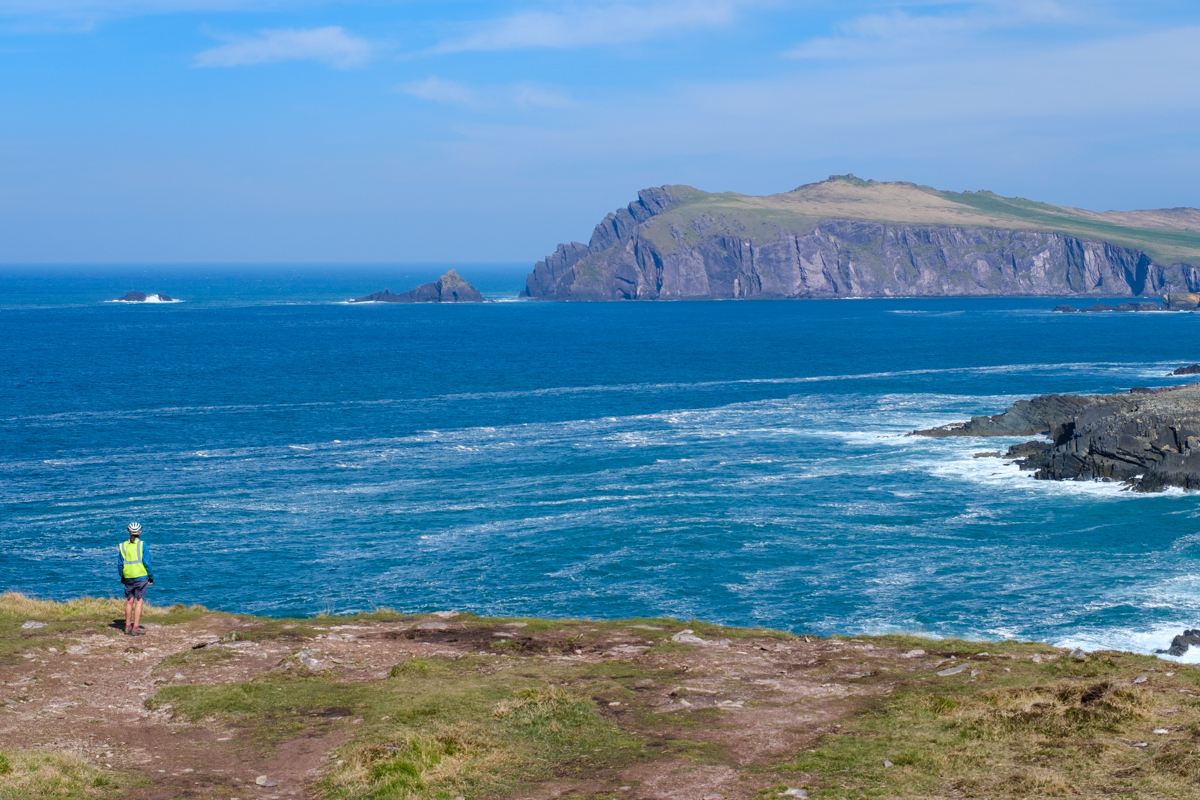
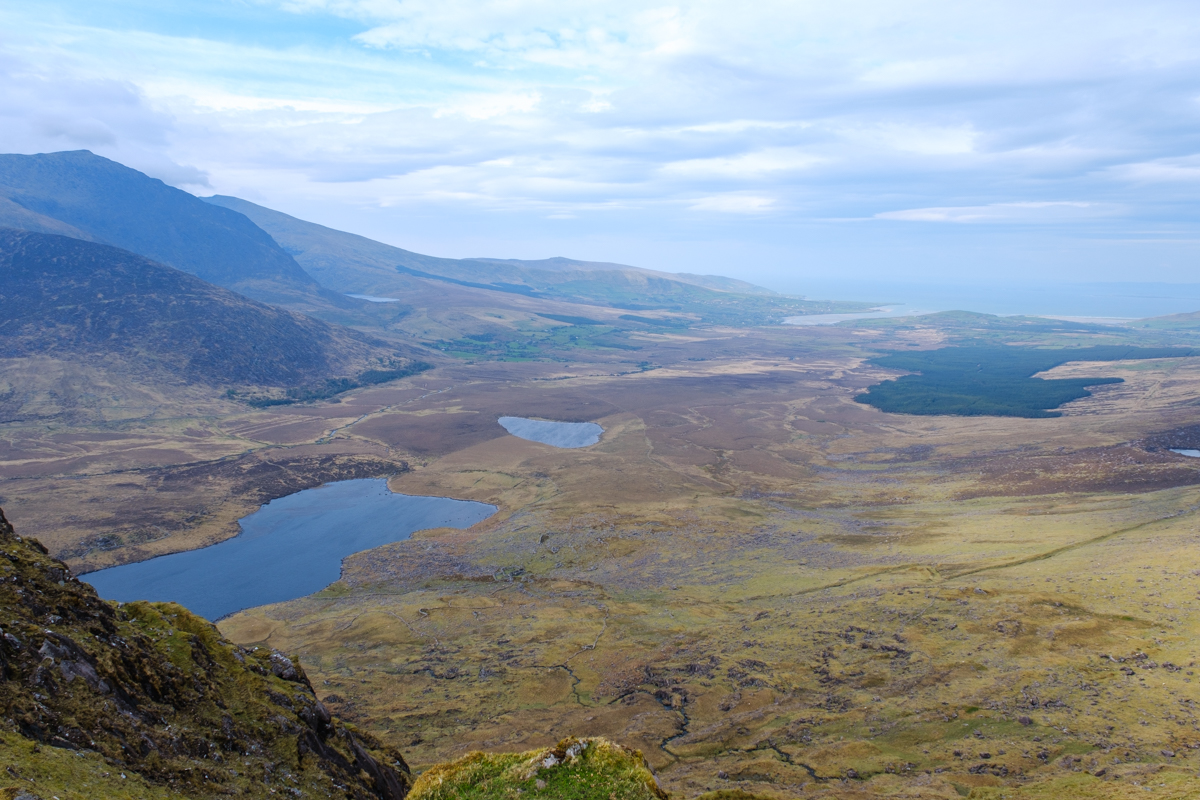
Central WAW: Counties Clare and Galway
The central section of the WAW was full of varied landscapes and interesting geology. The Cliffs of Moher are the most famous landmark on this part of the route, but they are very busy with tour groups. Personally, we thought the cliffs of the Loop Head Peninsula were just as beautiful and much less crowded. There were a ton of nesting seabirds that looked like tiny penguins on the sea stacks at the end of Loop Head, and we later found out they were some type of auk.
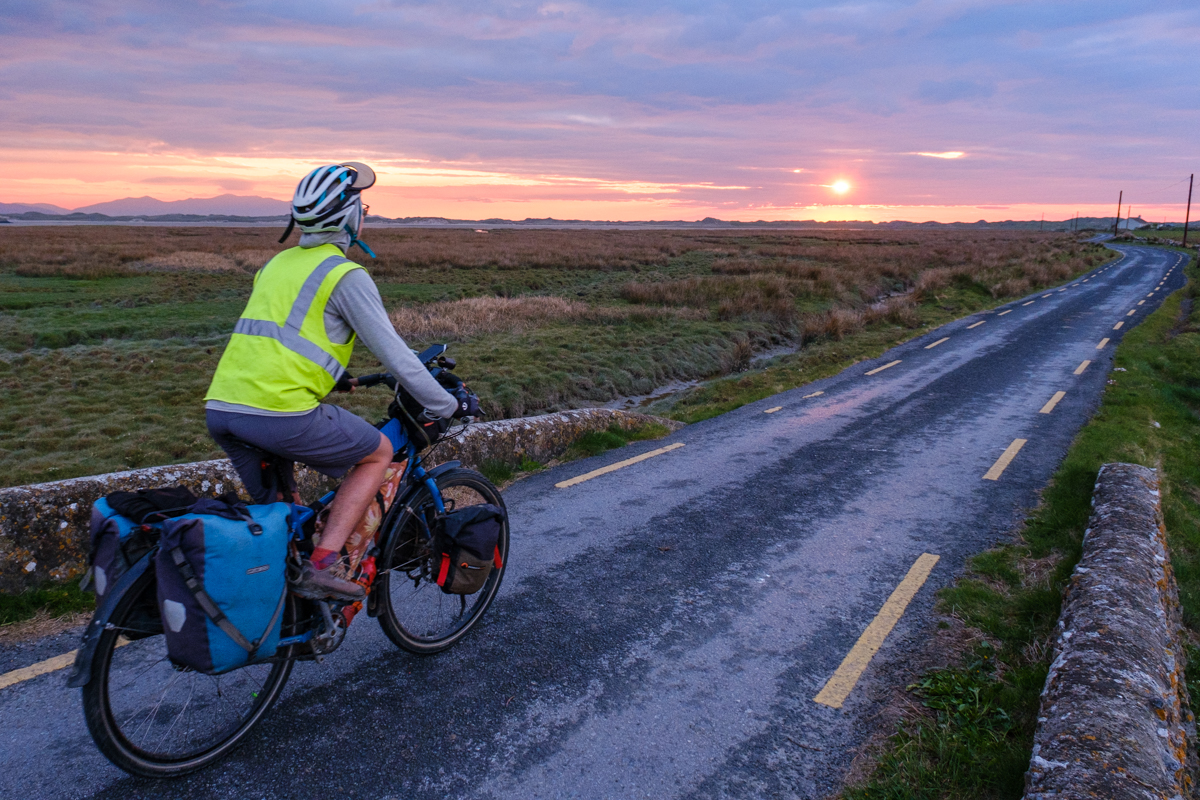
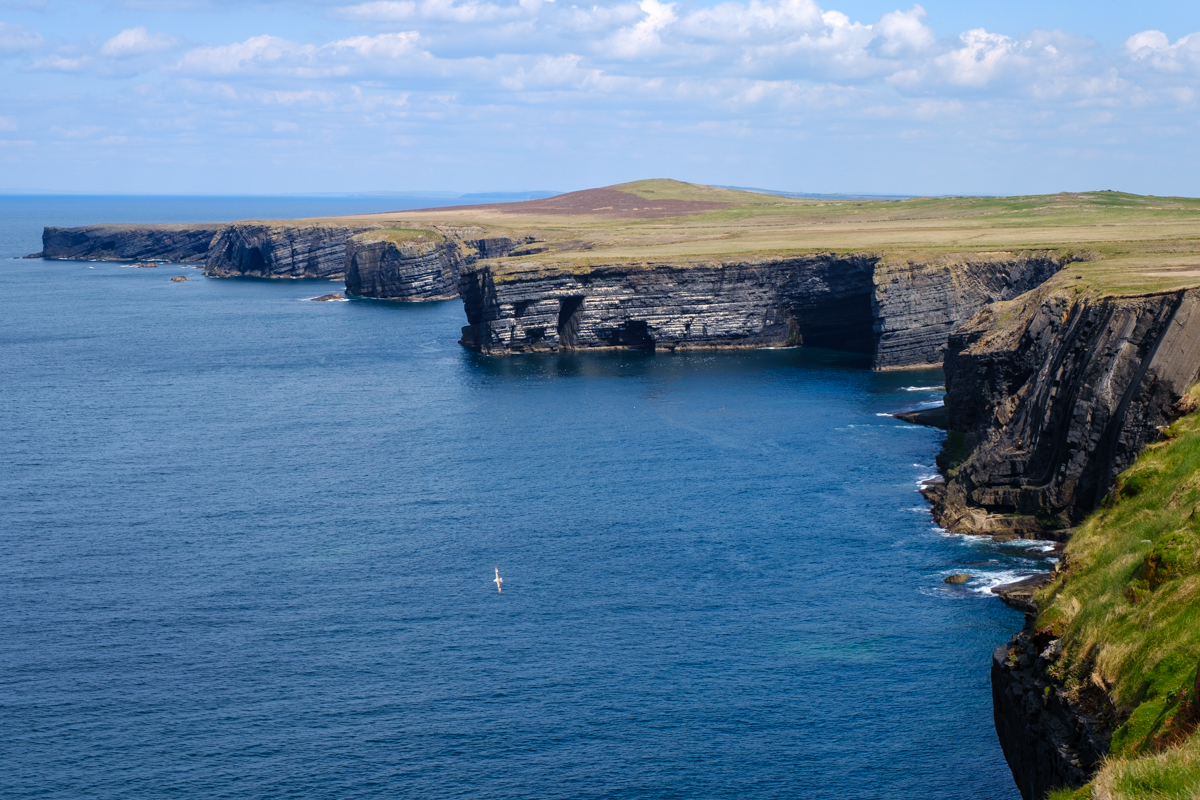
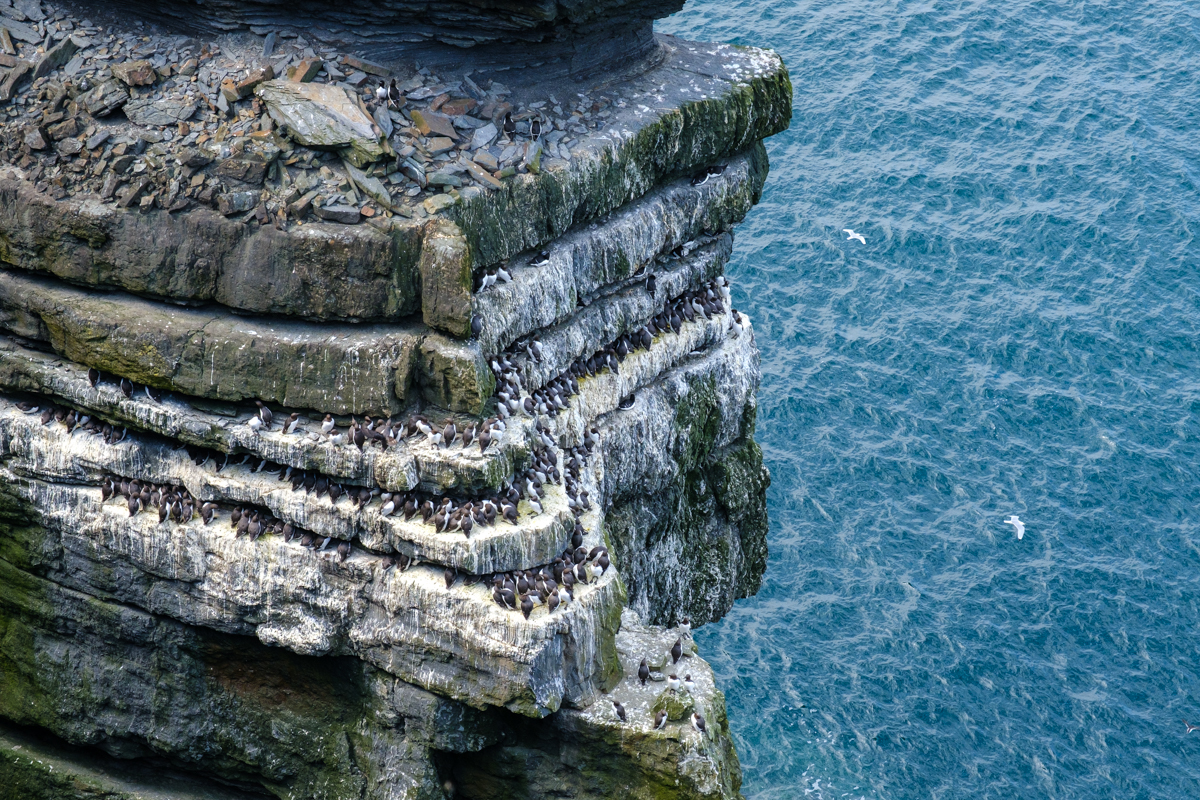
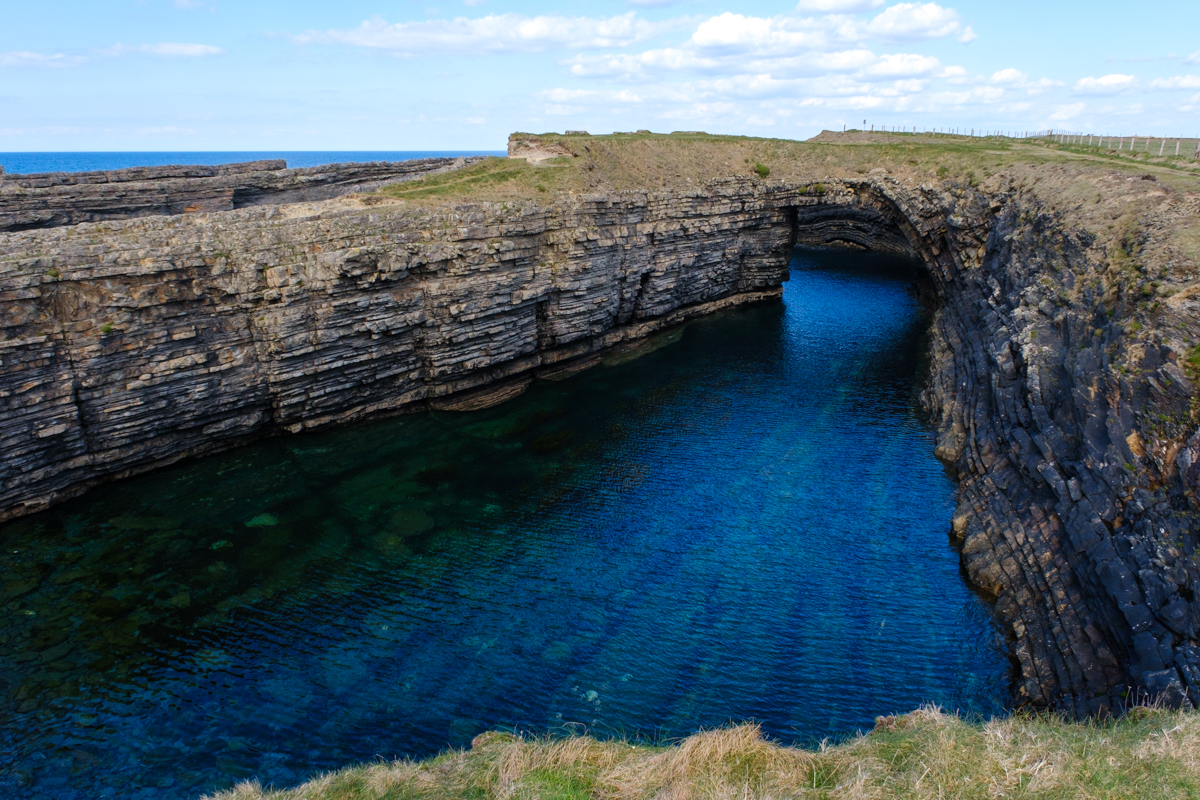
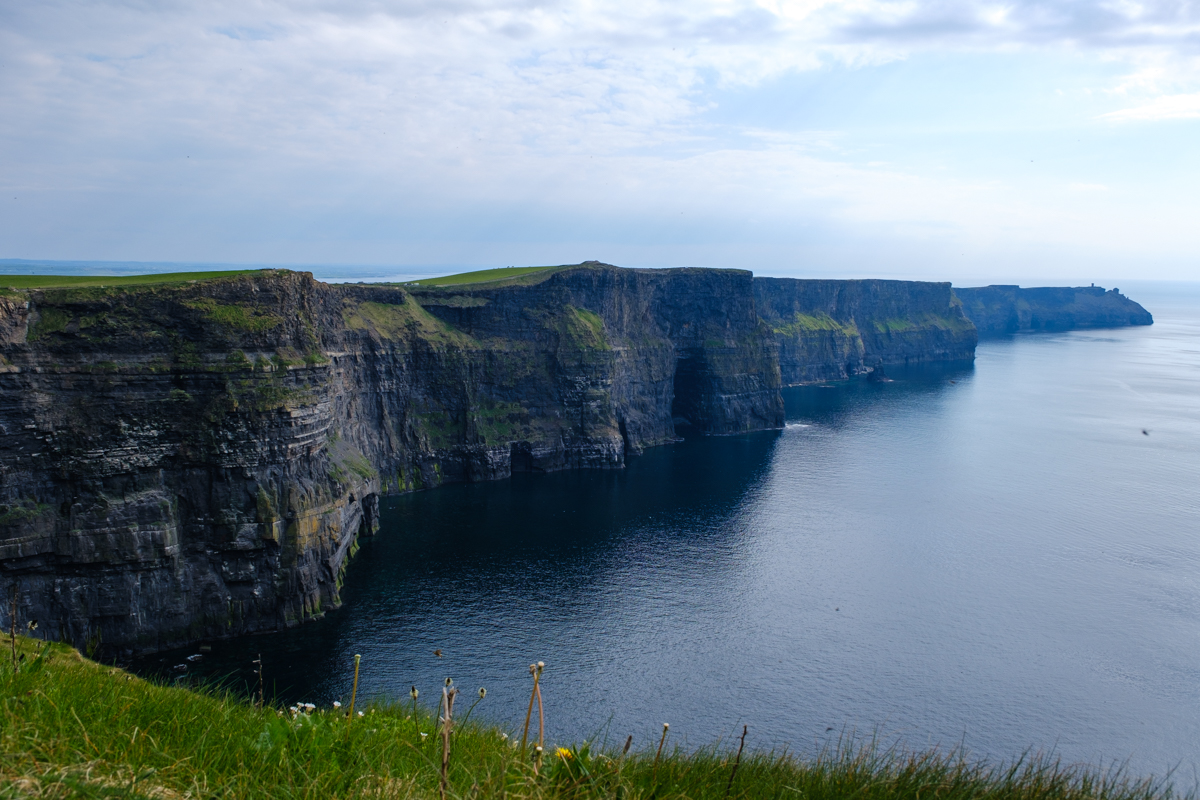
The Burren Special Conservation Area
One morning, when we were camped in the hills not far above the road, a hiker walked by and chatted with us for a bit. He told us that we were about to go through the Burren Special Conservation Area, which is geologically unique and home to many native plant species. It turned out to be one of our favorite parts of the WAW, and we took a detour to see more of the Burren, which also had some neat archaeological sites.
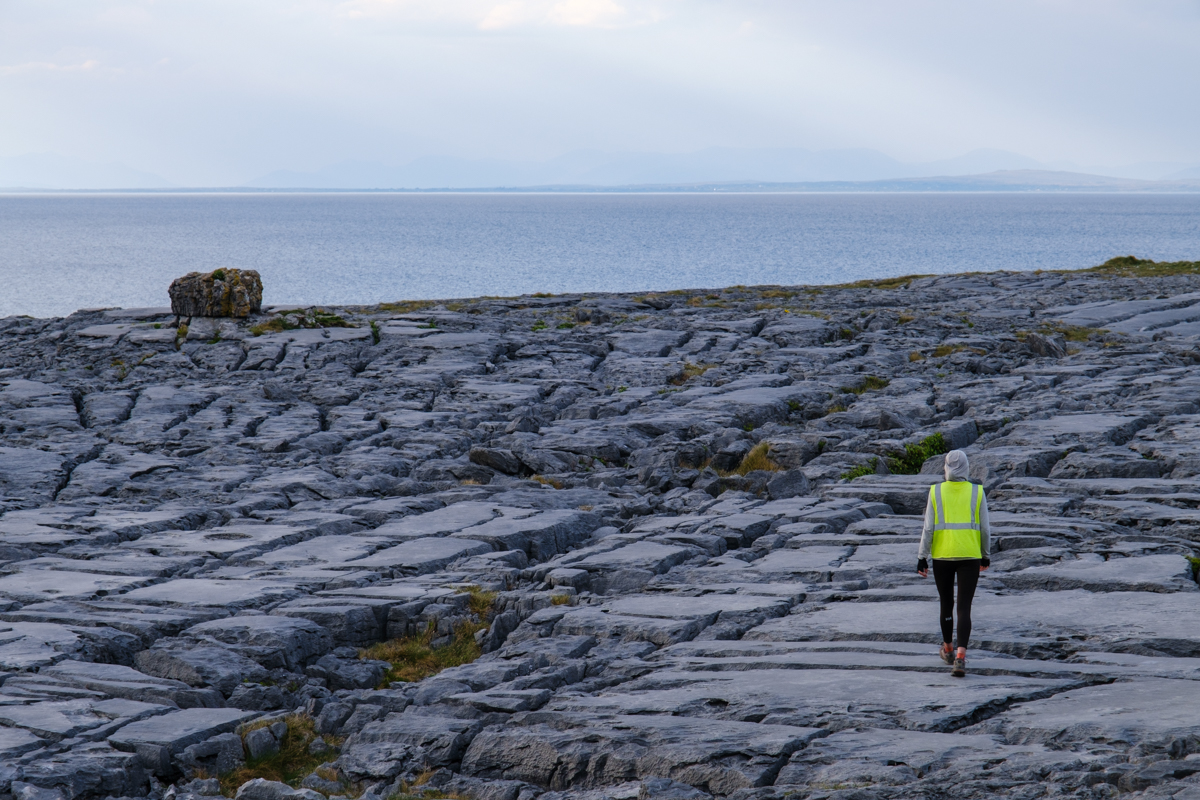
Connemara
Connemara roughly encompasses the area between Galway and Killary Fjord, and was another highlight of our ride on the WAW. From spectacular coastal views to barren boglands and the breathtaking Killary Fjord, there was a lot to see and explore. Killary Fjord is one of Ireland’s only fjords, and we even saw a pod of dolphins leaping in the water at sunset!
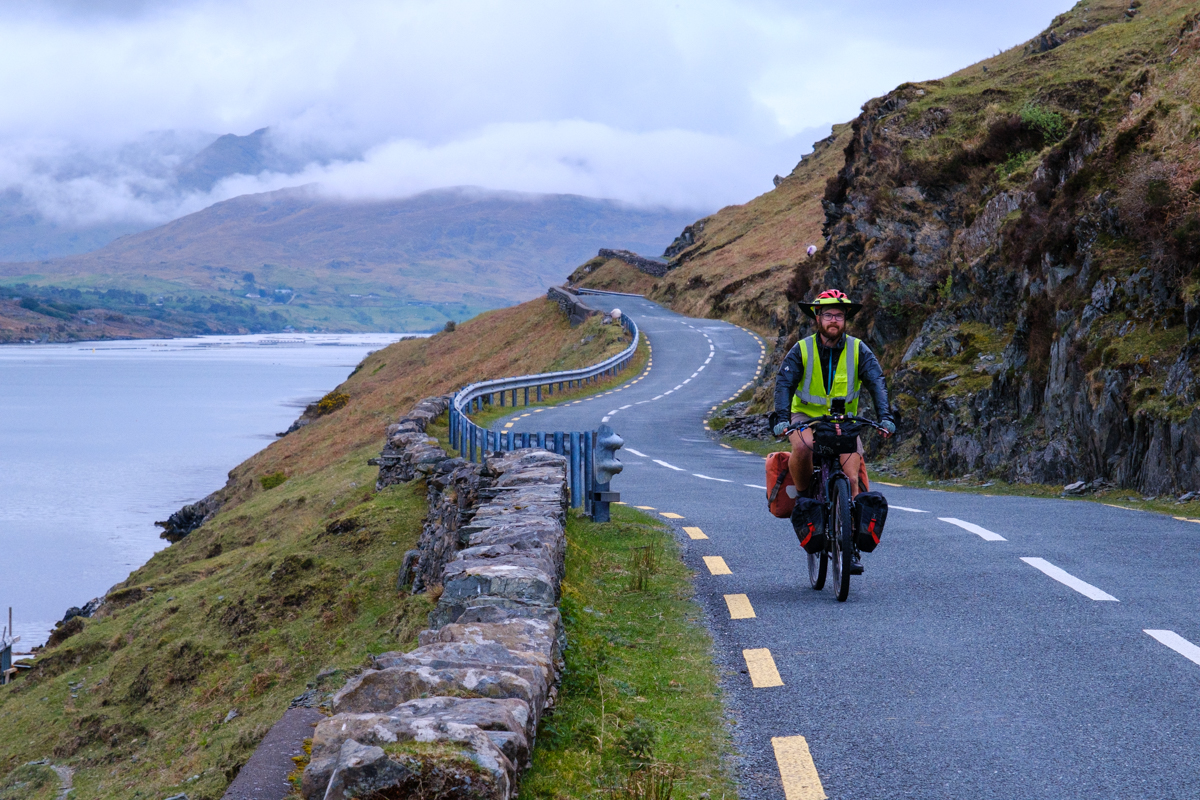
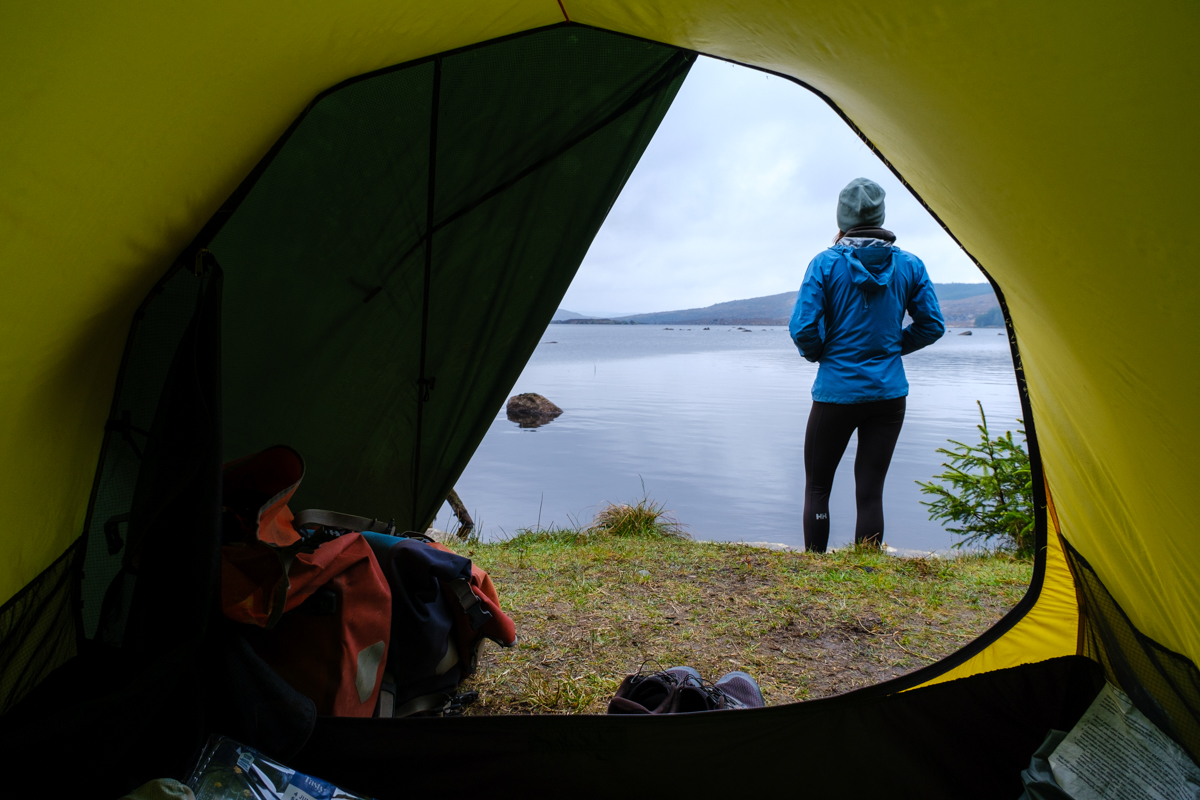
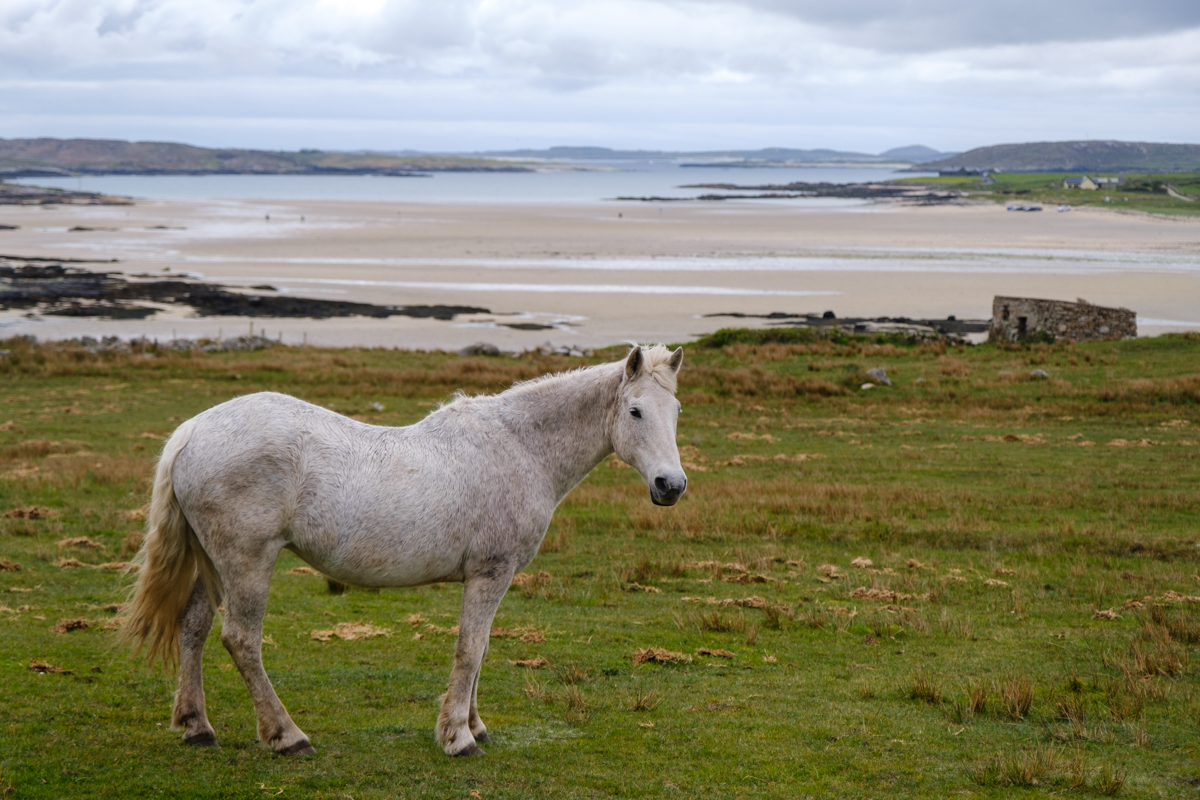
The Great Famine and the Doolough Valley Tragedy
We both listened to a very informative podcast about The Great Famine while we were riding in Ireland, and it enriched our understanding of Ireland’s recent history.
The Doolough Valley Tragedy is a well known event that occurred during the Famine, where a group of starving people from Louisburgh walked 12 miles to the Delphi Lodge to apply for relief. Their request for aid was denied, and they were forced to return home without food provisions. The exact death toll is unknown, but many men, women, and children perished on the difficult journey across mountain passes during a winter storm.
We had just learned about this event in the podcast we were listening to, but didn’t connect the dots until a local told us that we’d ridden by the Delphi Lodge only a few miles ago. It was surreal to learn about the tragedy while cycling through the valley where it occurred.
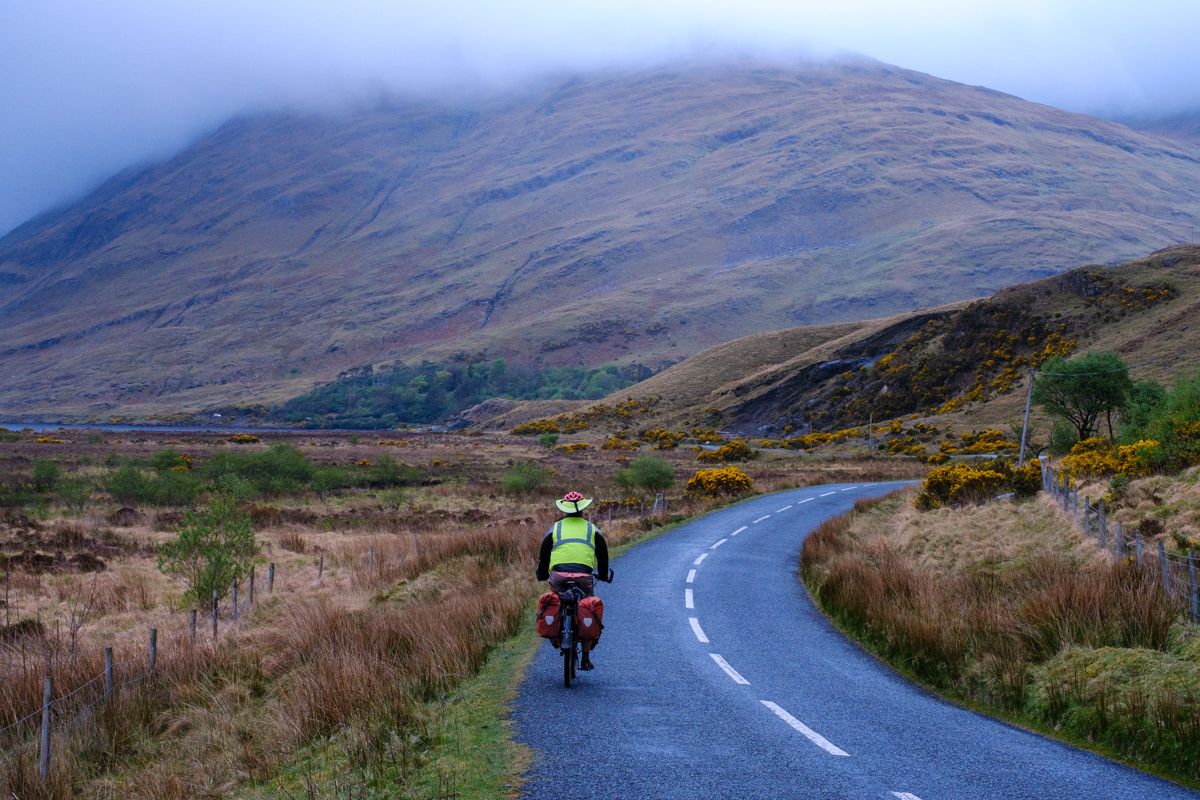
Unparalleled Irish Hospitality
One evening, we started to ride up into a forest area that was pretty close to a small settlement. It was getting dark, and the forest roads had been solid camping choices so far. A sheep farmer spotted us heading into the woods, and he and his dog cruised up to us on their ATV and invited us to camp in the field next to their house. The farmer was extremely kind to us and made us hot whiskeys before turning in for the night. The next morning, he called out to us across the field and informed us that he was cooking us a full Irish breakfast!
All across Ireland, people were welcoming and friendly. There are many cycling enthusiasts in the country, and we frequently had people stop to chat with us about our journey.
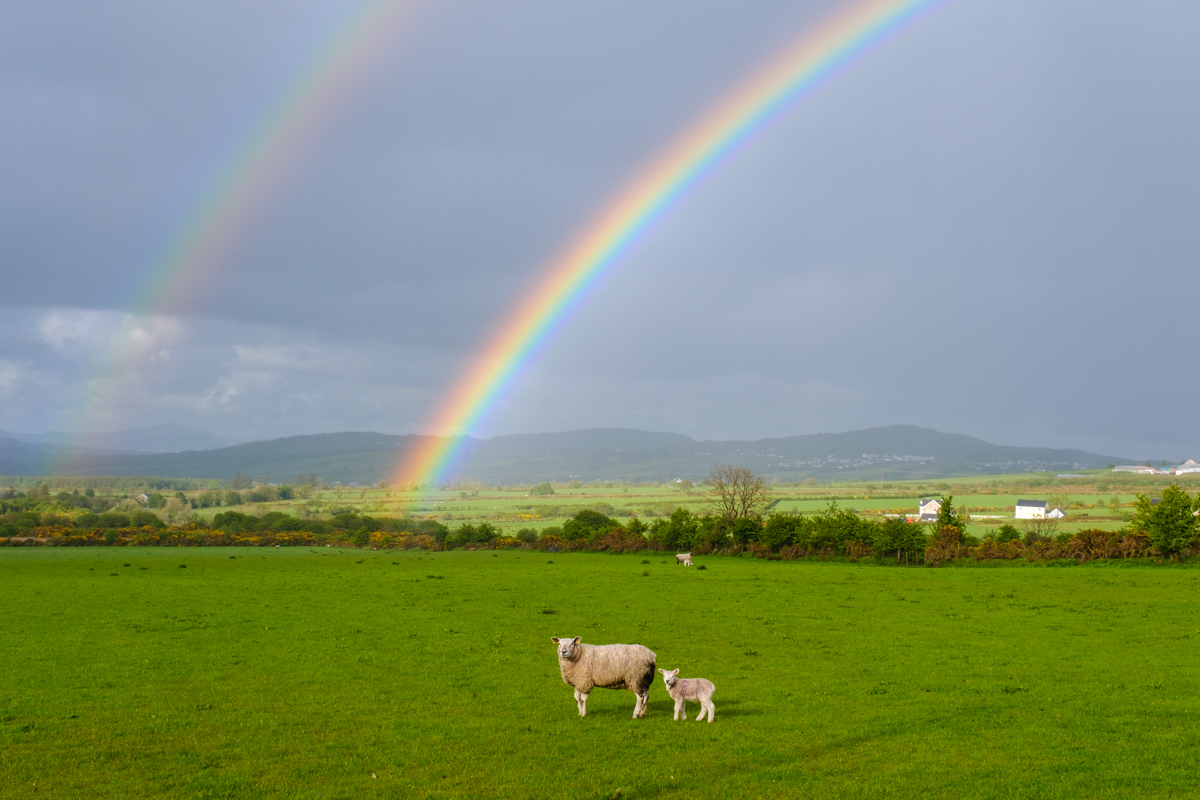
Northern WAW: Counties Mayo and Donegal
We rode the Great Western Greenway, which stretches from Westport to Achill Island and was a very nice break from riding in traffic. Also, we found a public bathroom along the bike path that had a free shower, which we were extremely excited about!
Achill Island
We had been really lucky with the weather up until this point, and finally had to deal with some significant rain on Achill Island. The scenery was wonderful, as usual, but we decided not to go all the way to the far side of the island due to heavy winds.
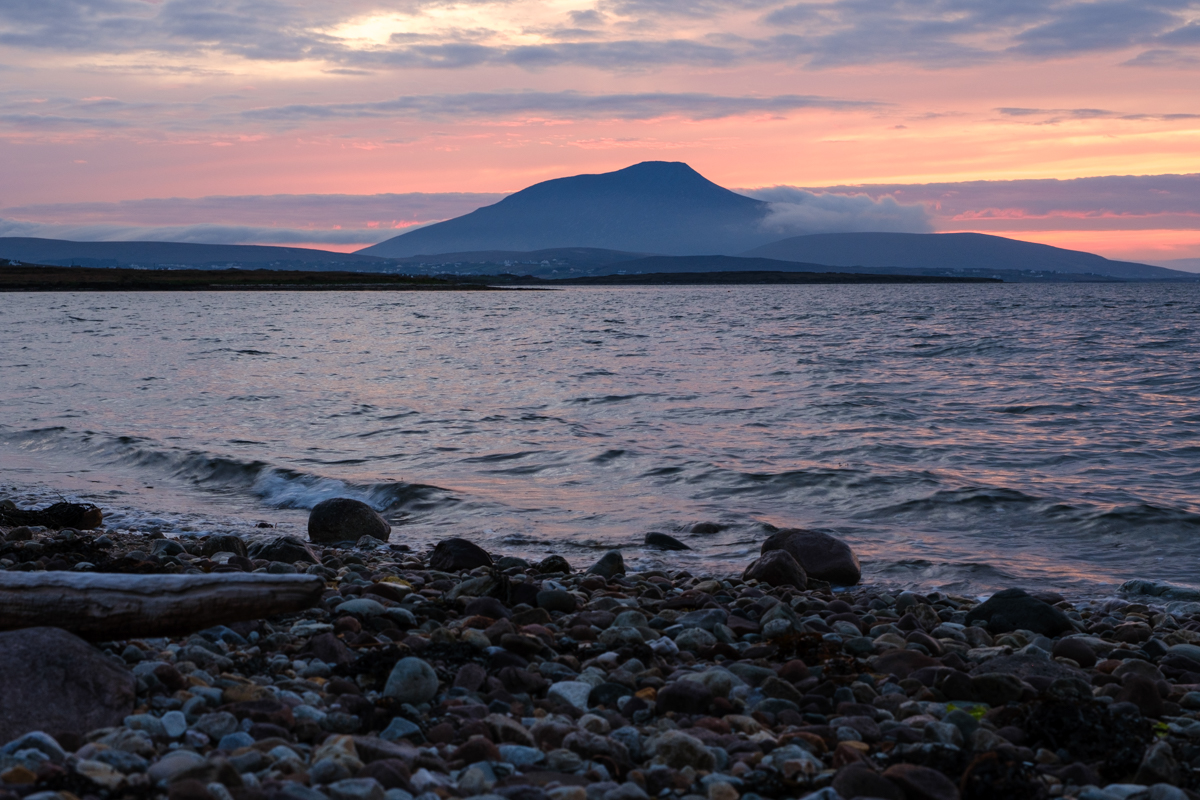
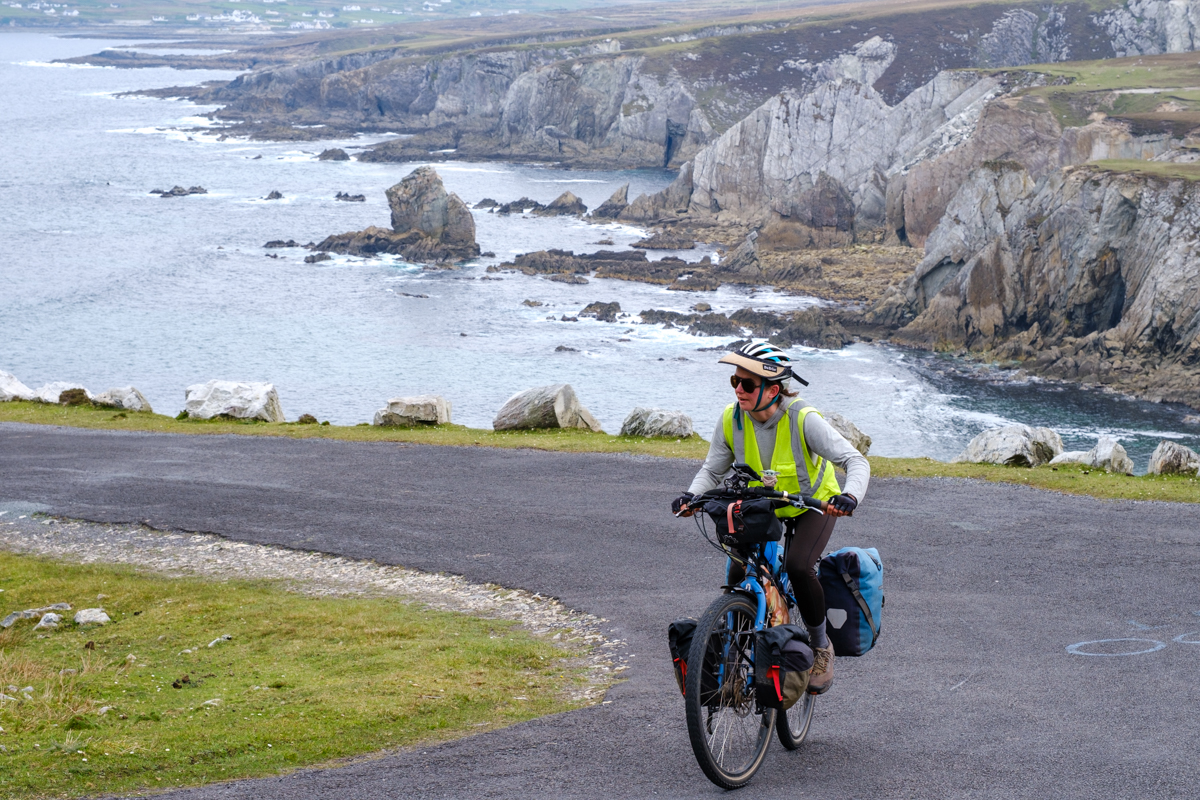
County Donegal
We had some more inclement weather in the north, so we decided to do a Warm Showers stay with an awesome couple that had cycled through a large chunk of central Asia. One of them was a vet and answered a bunch of our lingering questions about sheep farming.
They recommended that we cycle through Union Wood, which is one of the best remaining natural oak woodlands in Ireland. Most of the forests we’d seen were planted tree farms that were essentially mono-cultures with little to no understory vegetation. When we cycled through Union Wood, there was much more biodiversity, including beautiful carpets of bluebells.
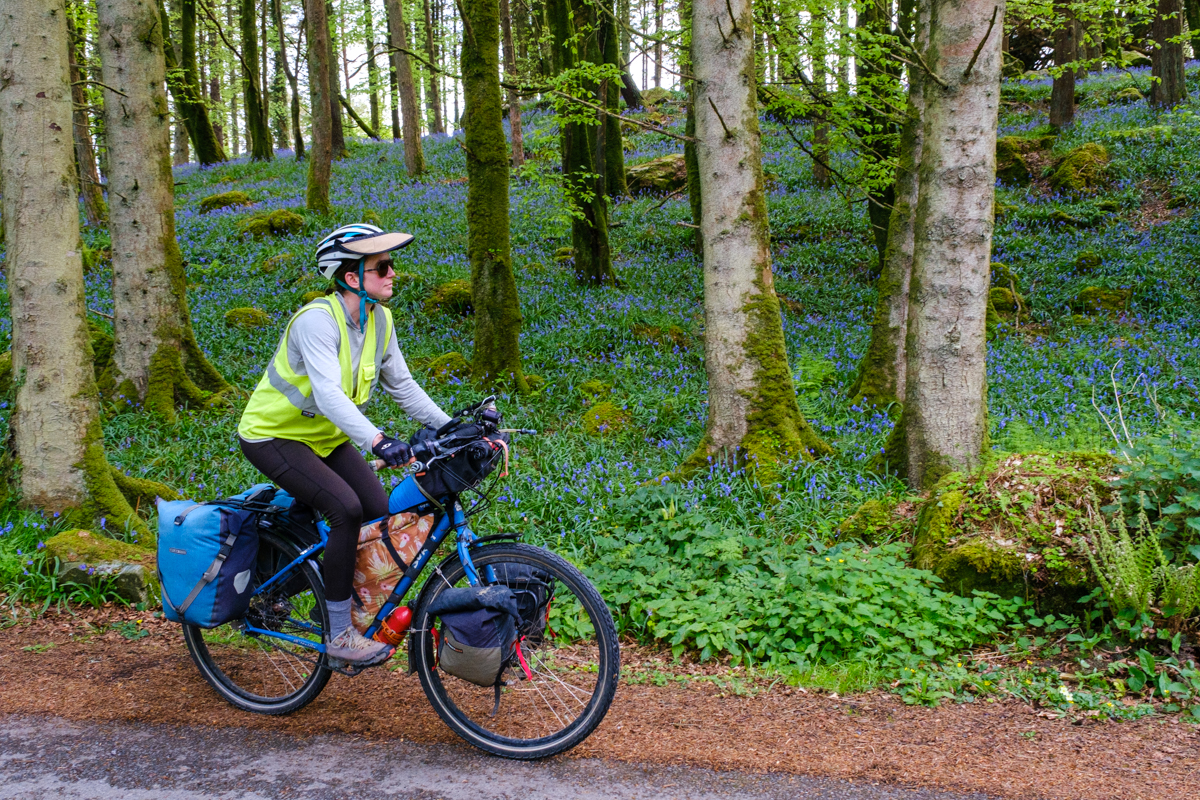
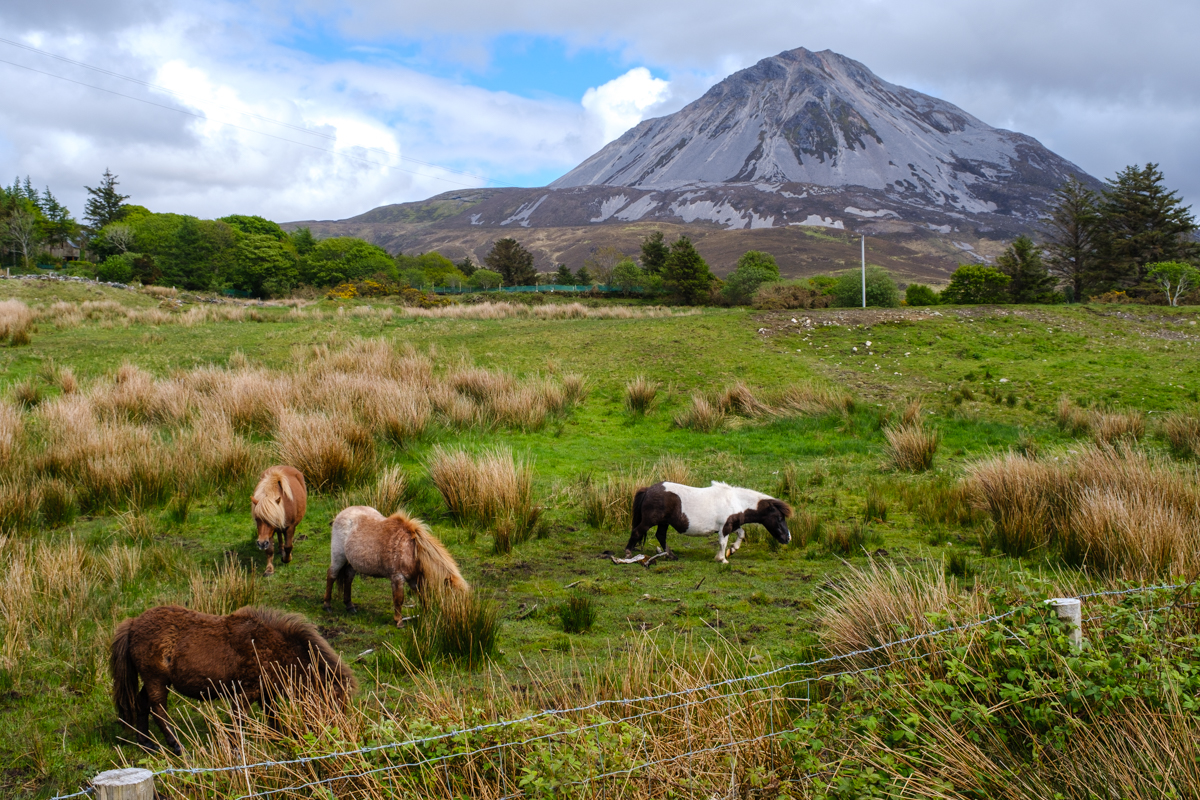
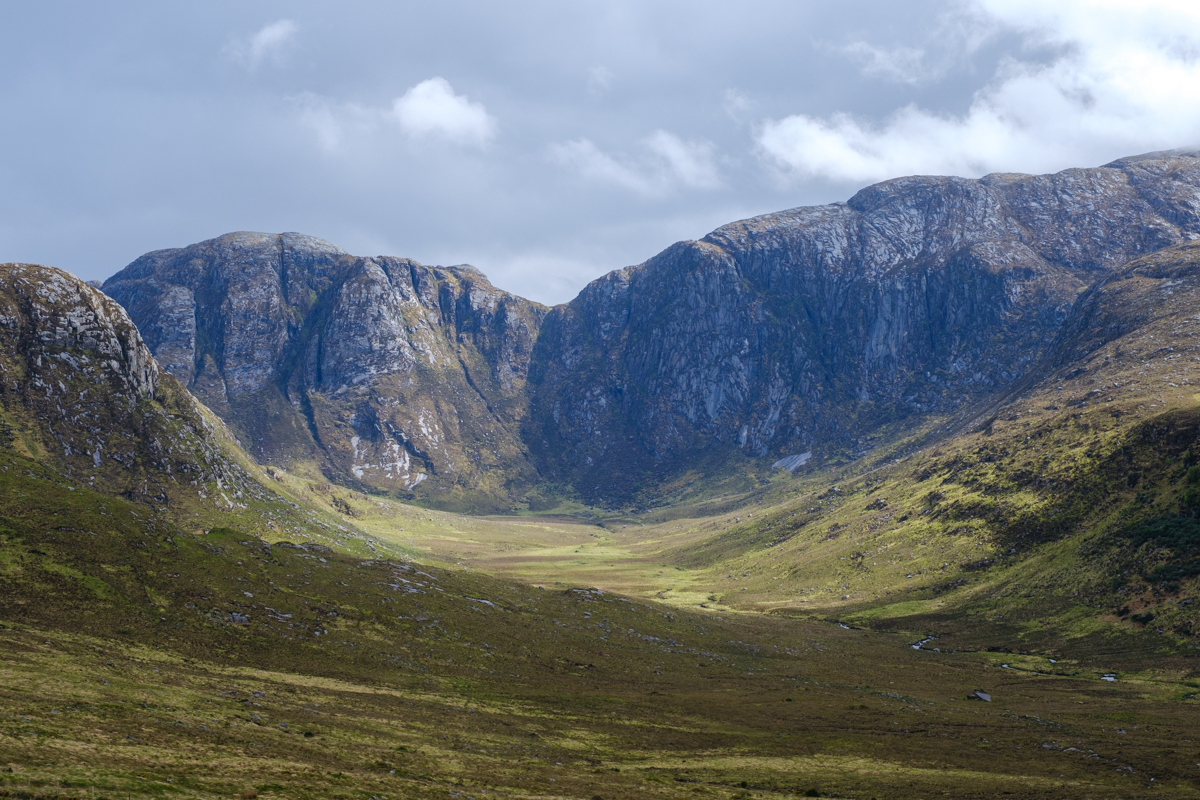
Derry and the End of the WAW
The WAW ends in Derry, just over the border of Northern Ireland, where we stayed for a couple nights at a cheap B&B. The city has a fascinating and tumultuous history, and remnants of The Troubles are still apparent in the heavily fortified police stations and the many signs where the “London” of Londonderry is scratched out. Derry is the only fortified city in Ireland that still has its walls intact, and the old town area was very enjoyable to walk around.
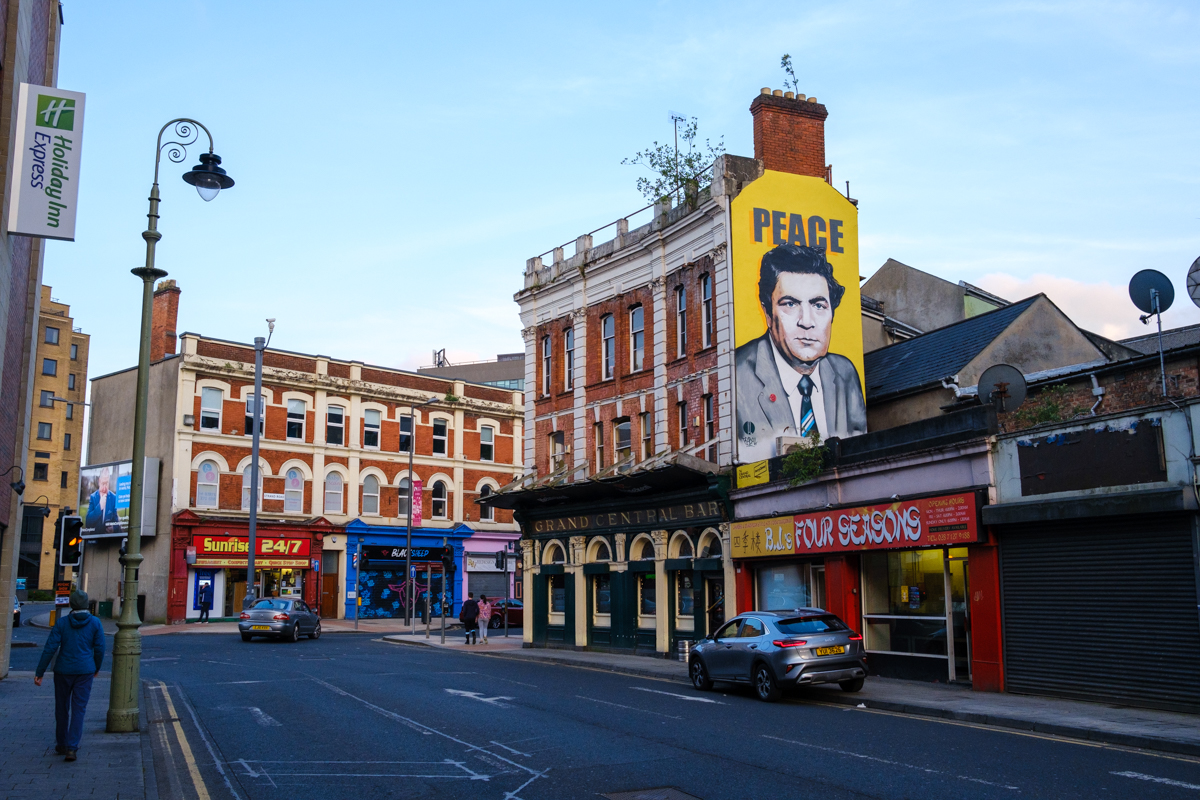
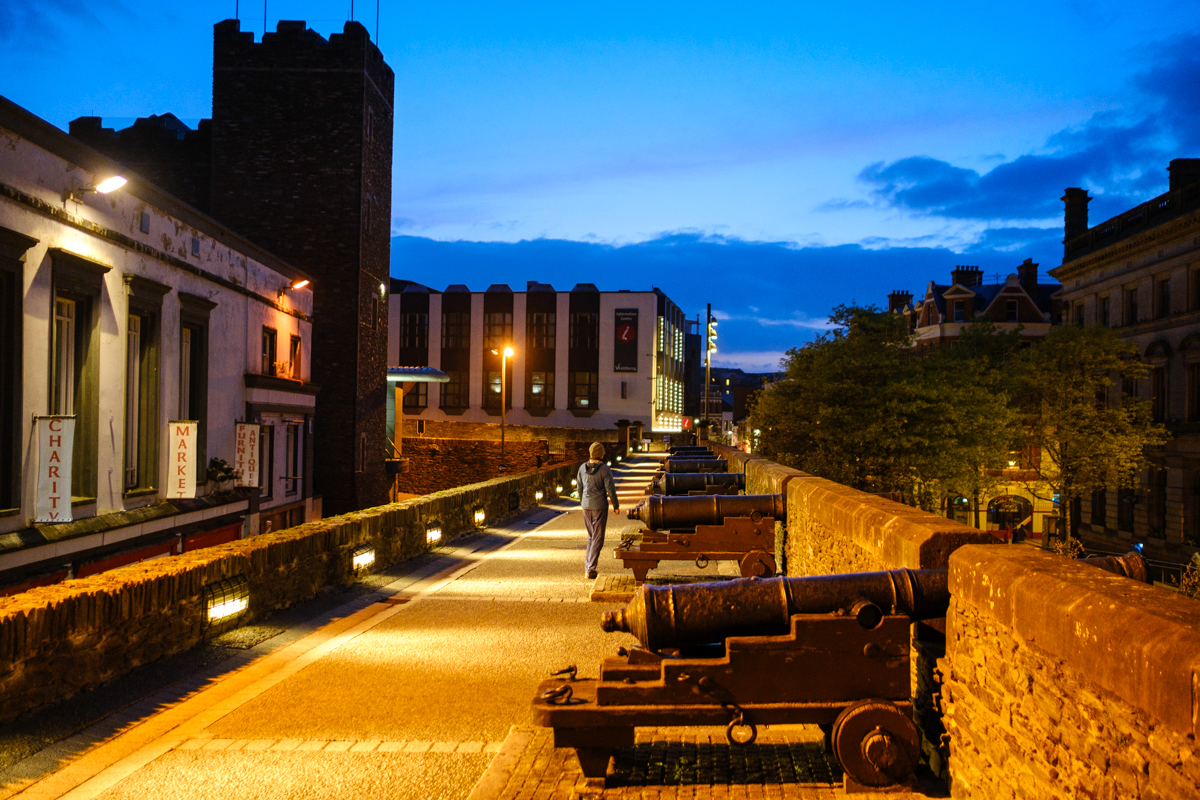
Camping on the Wild Atlantic Way
We wild camped most of the time on the Wild Atlantic Way, and stayed at small B&Bs a handful of nights. Wild camping can be challenging due to the amount of farmland and private property, but it is still manageable and seems to be tolerated as long as you’re discreet. Forest roads were usually the easiest option, and the more wild coastal areas were also good bets.
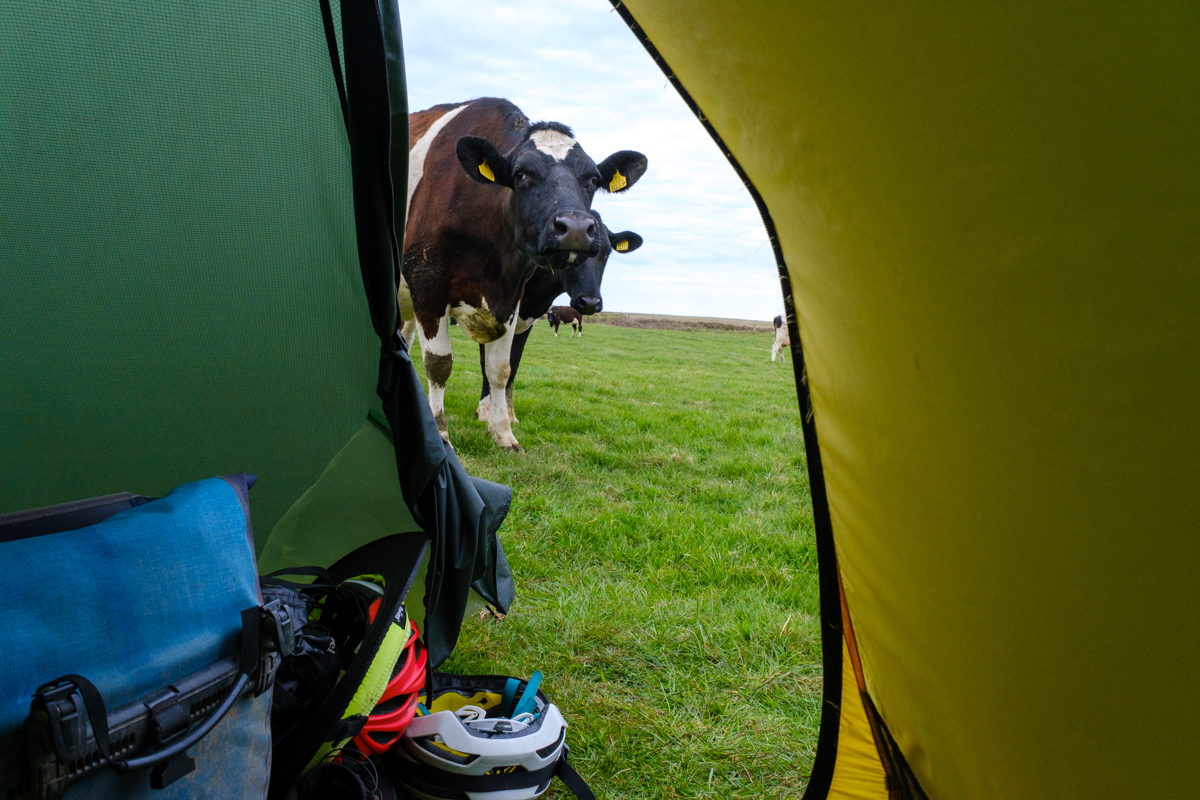
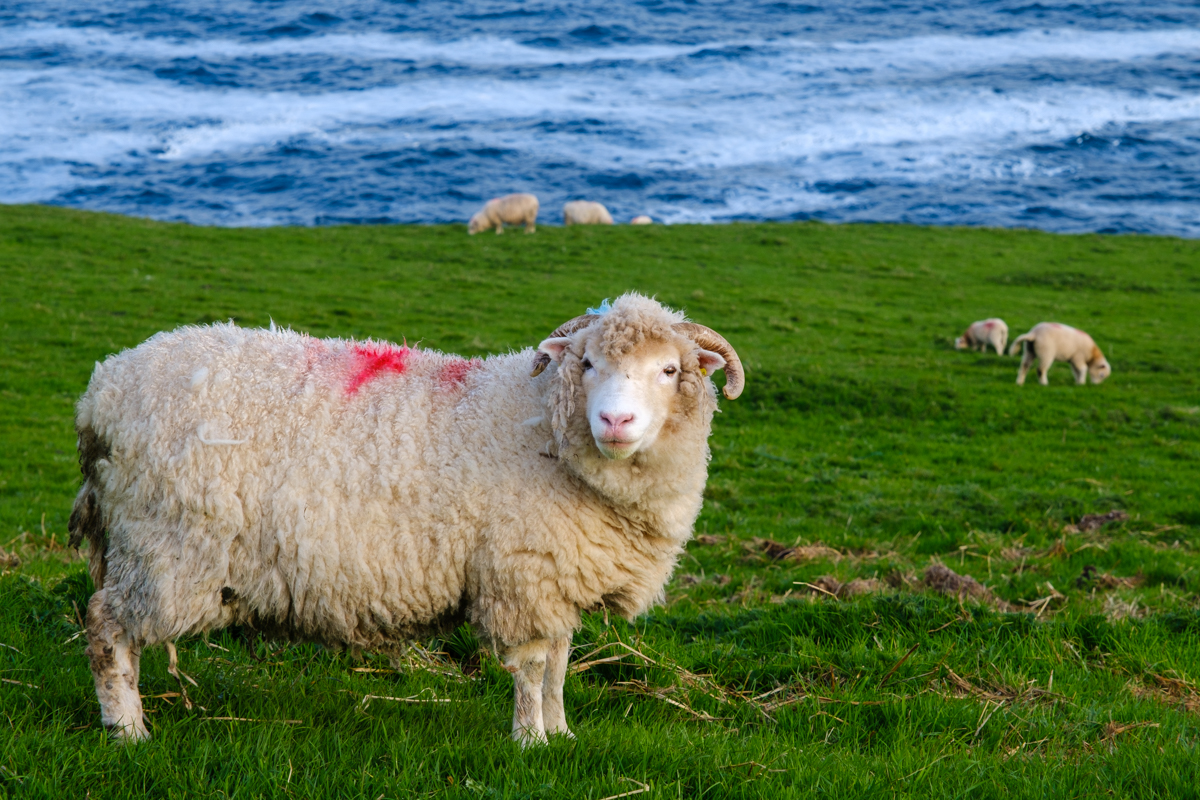
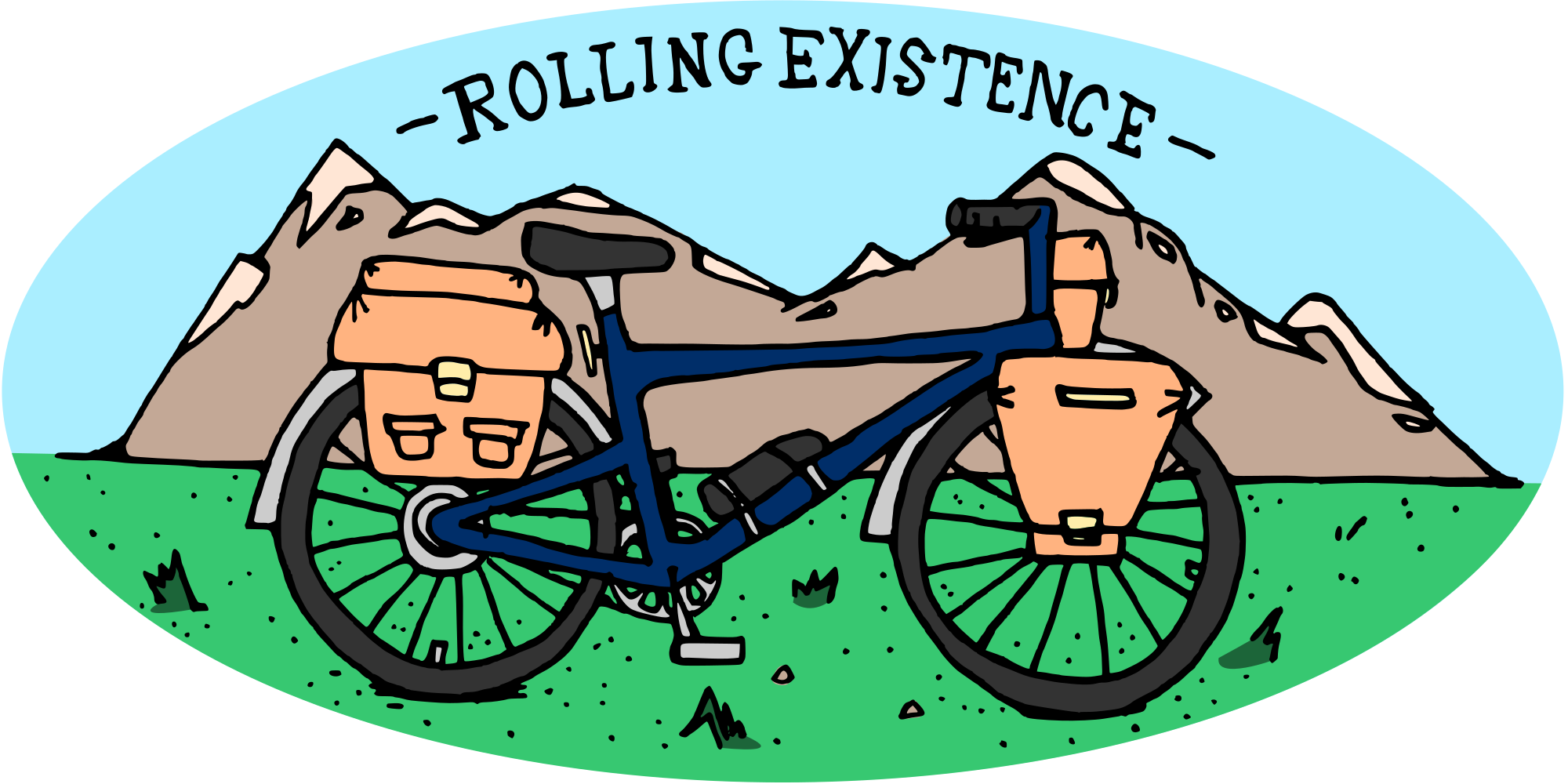

Thank you for these great pictures and advice. If you 0nly had 5 days to bike in Ireland and we want to experience the WAW, would you recommend the north, south or mid section?
THanks!
The peninsulas in the south have some of the most spectacular and iconic scenery – Dingle, Kerry, and Beara are all amazing and could definitely keep you occupied for that time period! But it’s really hard to go wrong on the WAW, there’s so much beauty around every corner. Hope you have a fantastic trip!
Thank you for this article! Could you please tell me whether you saw regular campsites along the WAW, or are B&Bs the only option? We were thinking of hiring bikes and cycling only a part of the WAW, mostly in county Galway, and renting something like an (im)mobile home to stay each night, but does this sound real? Thank you very much!
Would love to know the Potato Famine podcast you were listening to! And also, is there a reason the route is usually ridden south to north? Would north to south be just as great?
The podcast was by Behind the Bastards, and the episode series is called “That Time Britain Did a Genocide in Ireland.” Would highly recommend it, link below:
https://www.iheart.com/podcast/105-behind-the-bastards-29236323/episode/part-one-that-time-britain-did-95432845/
Cycling south to north is ideal because you’re riding along the ocean the whole time, being on the left side of the road. You get a better view while riding and it’s just easier to pull over whenever you want to.
Pingback: The Wild Atlantic Way – Emma Karslake